Vintage images of America's most historic attractions
Into the past
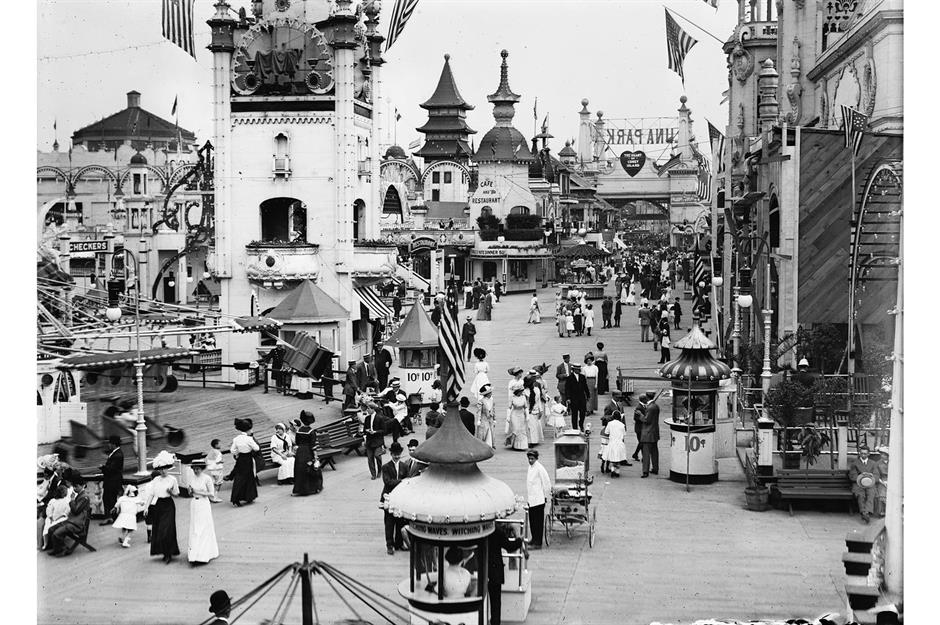
Whether you'd prefer to spend an afternoon dizzying yourself at a Disney park, or poring over one of America's most poignant landmarks, the USA has no shortage of top-notch attractions. And many of them have a long history and an interesting story to tell.
Read on to discover intriguing tales and stunning historic photos of your favourite US sights...
Atlantic City Boardwalk, Atlantic City, New Jersey
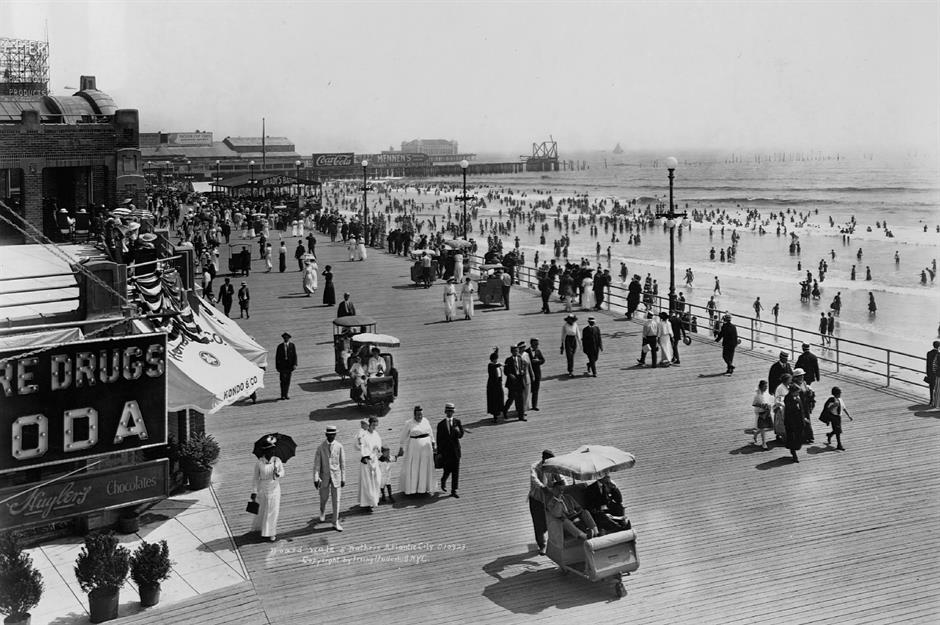
Atlantic City's beachside boardwalk has been a premier East Coast attraction since the 1870s, when the famous wooden pathway was first constructed. It's thought to be the first boardwalk of its kind in the United States, and has been lined with luxurious hotels, eclectic stores and restaurants since its earliest beginnings. Here vacationers wander the seaside boulevard on a sunny day in summer 1915.
Atlantic City Boardwalk, Atlantic City, New Jersey
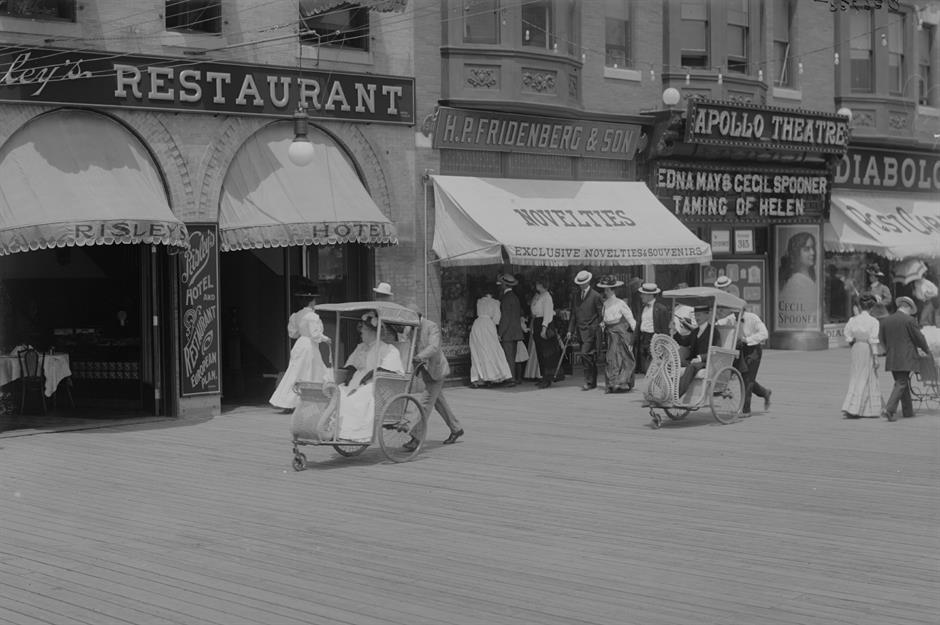
Atlantic City's rolling chairs became a popular way to travel the boardwalk from the 1880s – a marker of privilege and luxury, they were neat and compact, sometimes with ornate details and frilled umbrellas. They're still a common sight along the boardwalk, although the modern iterations are a far cry from the elegant people-movers of the past. Pictured here, wealthy vacationers are whisked past a theatre, restaurant and souvenir shop circa 1910.
Atlantic City Boardwalk, Atlantic City, New Jersey
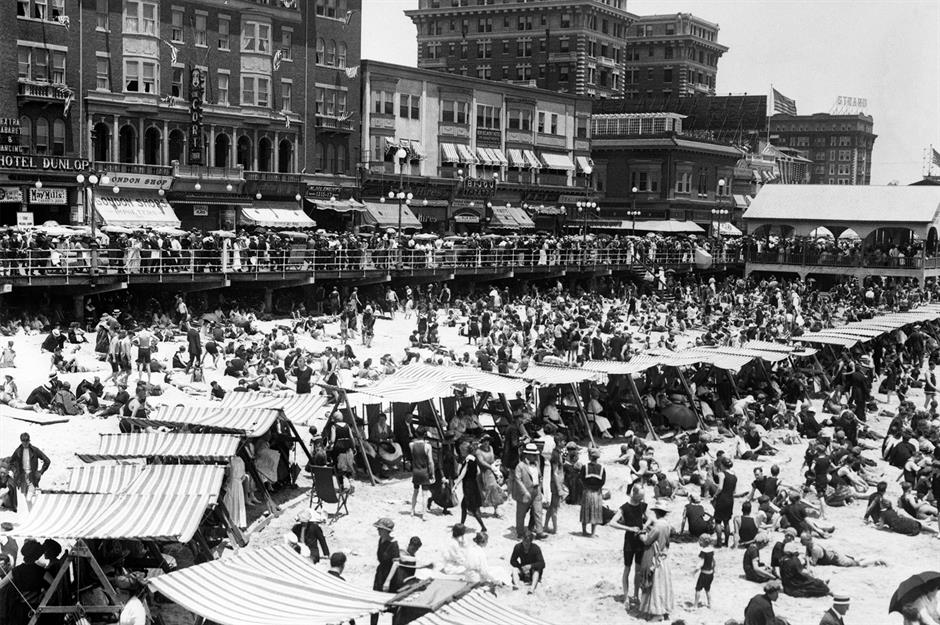
The beach was – and is – as much of a draw as the boardwalk, especially during sticky summers. Here, in the Roaring Twenties, sun-seekers bask on the sand or cool off beneath striped shelters, as the famed boardwalk bustles in the background.
Yellowstone National Park, Wyoming, Montana and Idaho
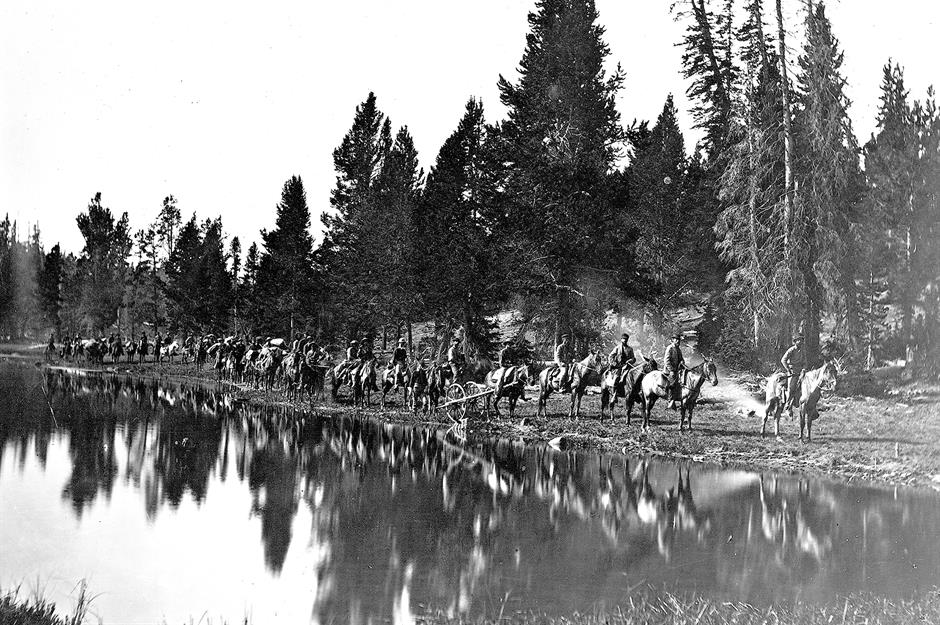
Yellowstone is the oldest site in the USA's National Park System. Established in 1872 it takes over a great swathe of northwestern Wyoming and seeps into the states of Montana and Idaho too. This photo actually predates the park's official founding – it shows a large party of men and their pack train during the Hayden Geological Survey of 1871, which explored the land that would eventually become Yellowstone National Park.
Yellowstone National Park, Wyoming, Montana and Idaho
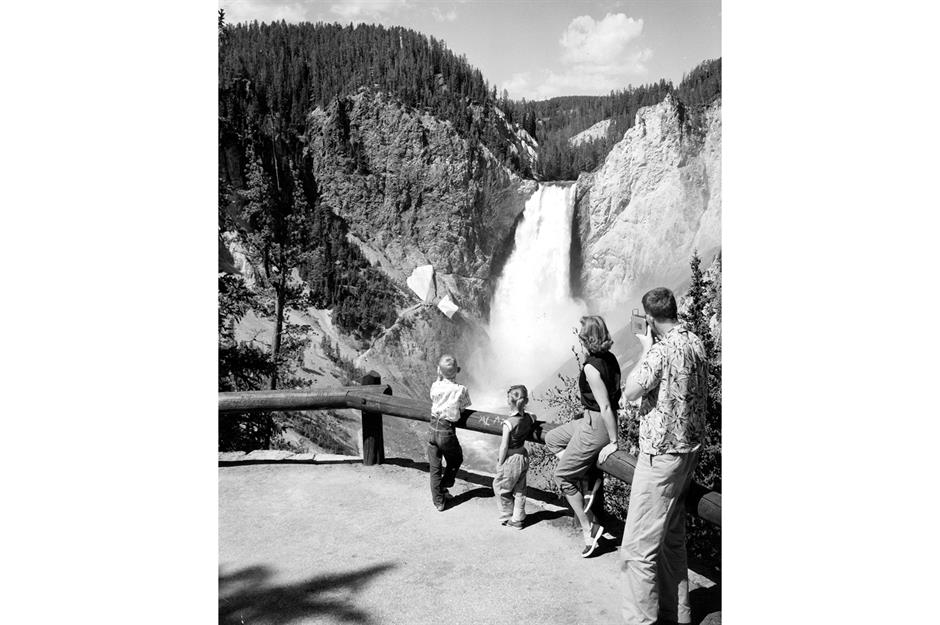
This national park is one of the largest in the USA too, leaving plenty of room for its revered natural wonders. Among them is Tower Falls, a 132-foot (40m) cascade in the northeast of Yellowstone, which you can take in from a scenic overlook. In this nostalgic shot, a young family admire the spectacle in 1955.
Yellowstone National Park, Wyoming, Montana and Idaho
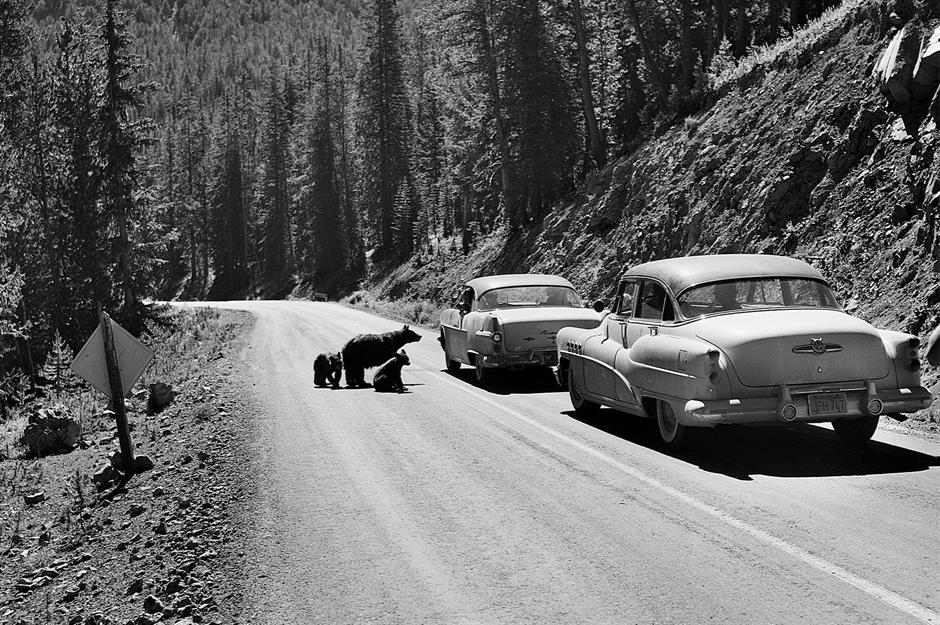
Bear safety is a topic of much discussion in Yellowstone, given that the park is home to both black bears and grizzlies. Visitors are warned against encouraging bears towards their car, and are given strict guidelines for camping or hiking in bear country. Decades ago, though, these vital safety procedures were decidedly more relaxed. Here, in 1957, a tourist leans out of his car to get a snap of a mother with her two cubs.
Love this? Check out our Facebook page for more travel inspiration
Grand Canyon National Park, Arizona
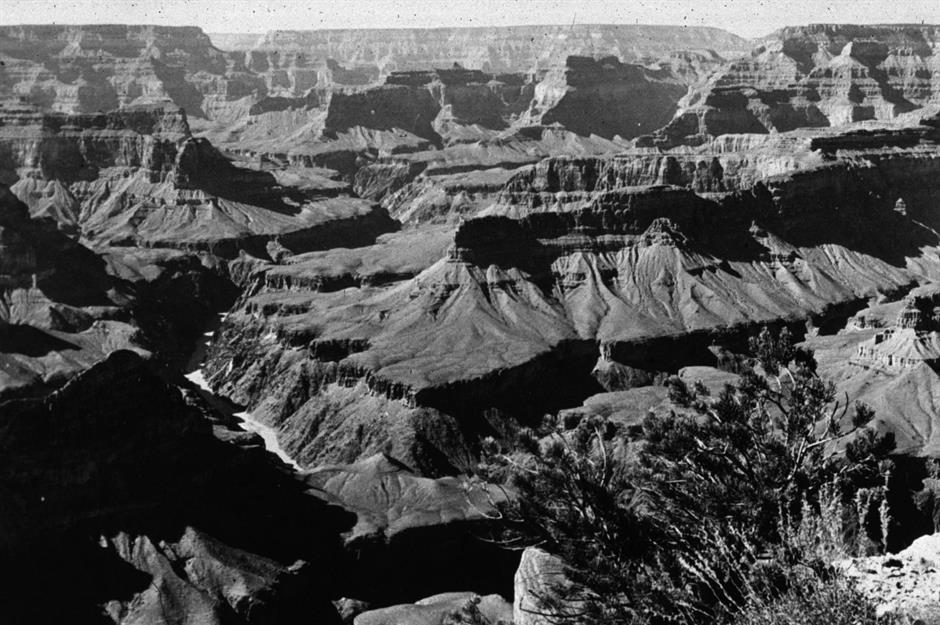
Though the jaw-dropping Grand Canyon was carved out by the Colorado River over millennia, it's been a US National Park for a little over 100 years, celebrating its centenary in 2019. The enormous canyon plunges to around 6,000 feet (1,829m) at its deepest point, drawing visitors with its striking red formations and seemingly endless vistas. It's pictured here in all its glory circa 1940.
Grand Canyon National Park, Arizona
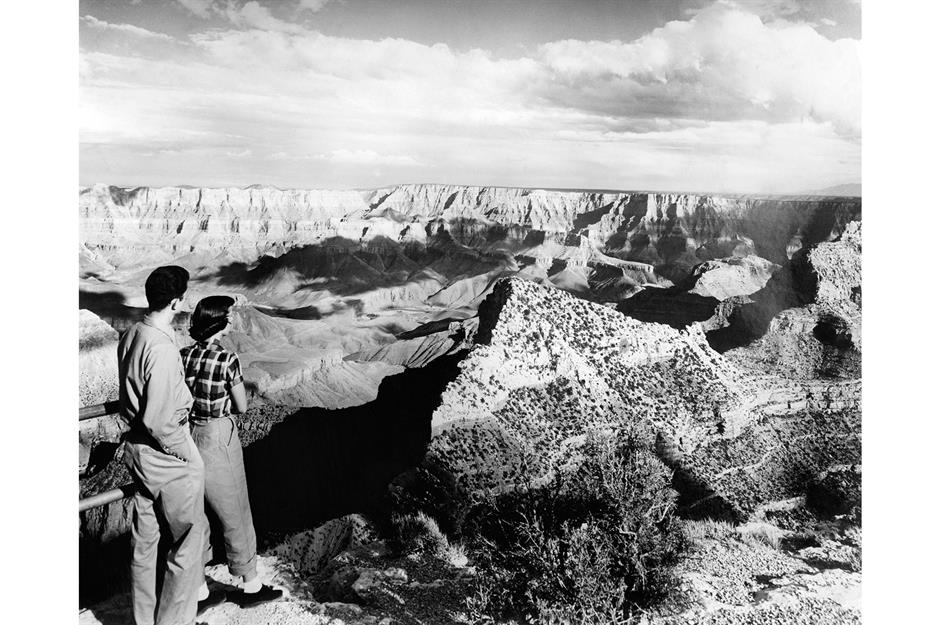
Today, the canyon is peppered with scenic viewpoints, from the famous glass Skywalk at the West Rim to Mather Point in the south. Here a couple in the 1940s stand at a rugged observation point and drink in the otherworldly landscape.
Statue of Liberty, New York City, New York
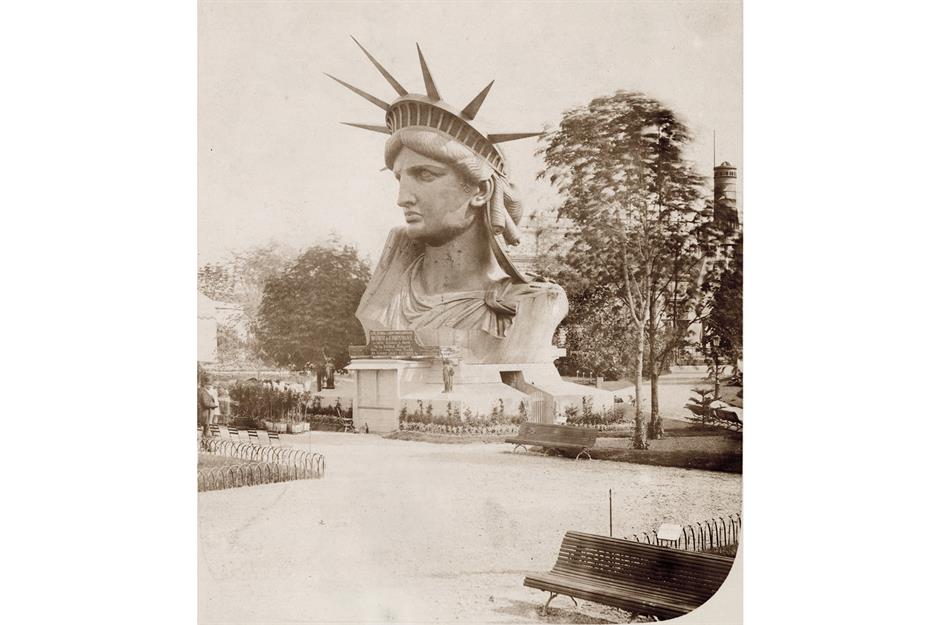
Lady Liberty, a gift from France in the late 19th century, is one of the USA's most storied attractions. The giant green statue stands more than 300 feet (91m) high and has towered over New York's Liberty Island since 1886. Before she made it to the Big Apple, though, her head was displayed at the Paris World's Fair in 1878 (pictured).
Statue of Liberty, New York City, New York
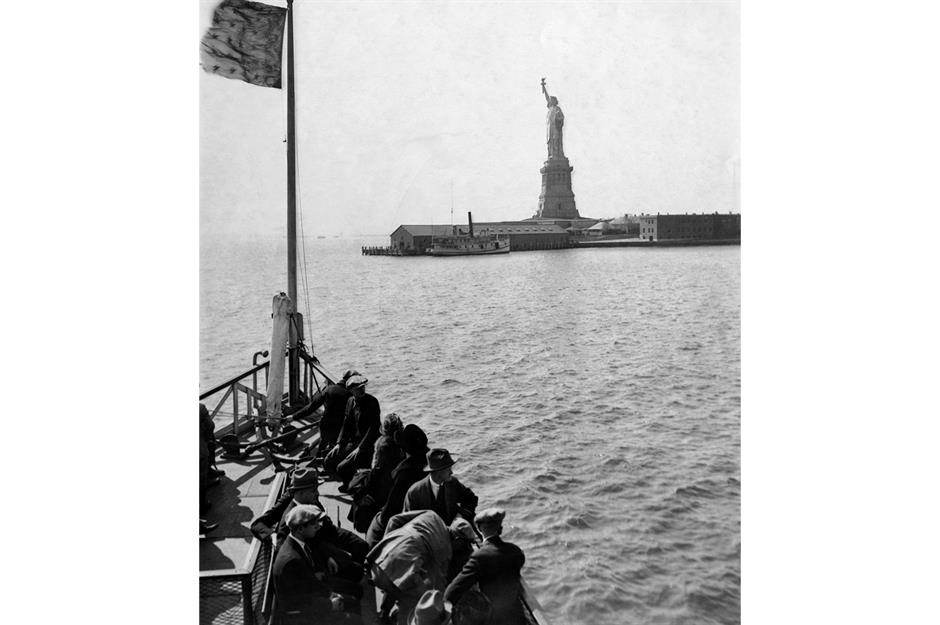
Fast-forward several decades and the Statue of Liberty has become New York City's best-loved landmark. She's pictured here in the distance as a busy tour boat sails towards her – several of the sightseers look on in awe on the approach.
Disneyland, Anaheim, California
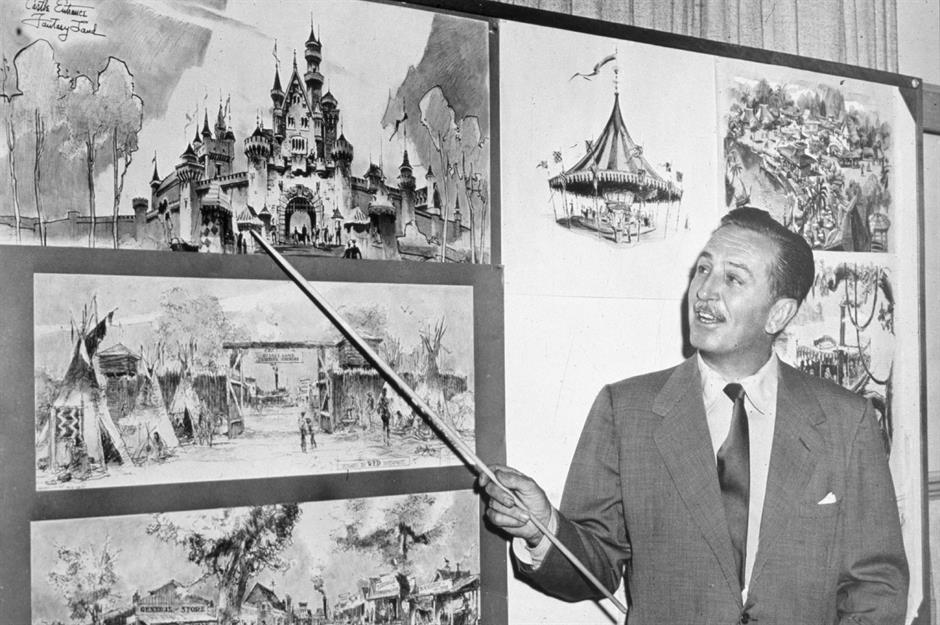
Though Florida's Disney parks have now dwarfed their Californian sisters in size, Disneyland in Anaheim will always be the oldest of these world-famous sites. It was, of course, dreamed up by animator extraordinaire Walt Disney himself, who was inspired by parks and attractions around the world. He's seen here with park sketches in the 1950s – you can spot the towers and turrets of Sleeping Beauty Castle and the buildings of Frontierland in the bottom left.
Disneyland, Anaheim, California
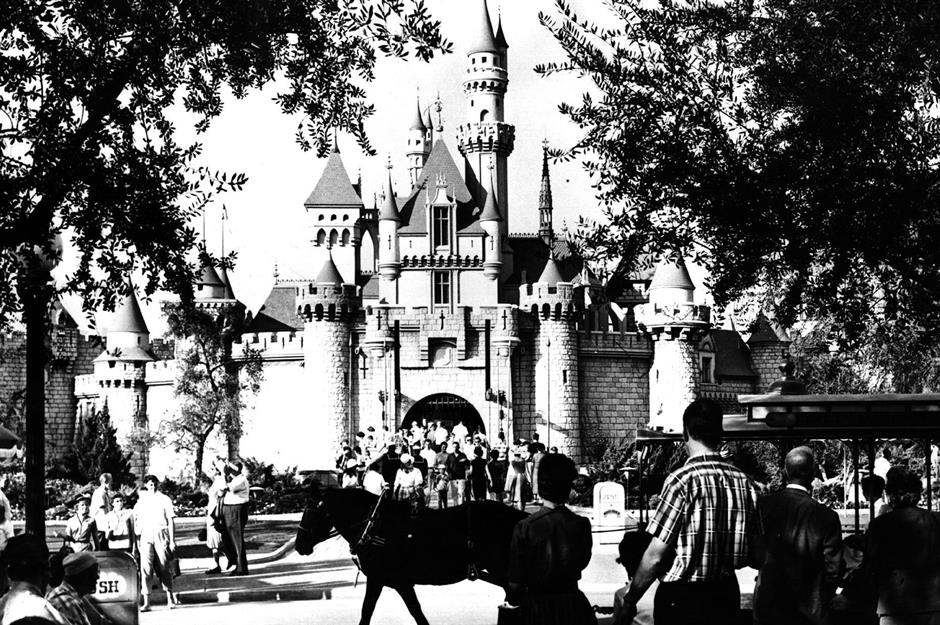
The park opened in 1955 to much applause, with the fairy-tale Sleeping Beauty Castle the star attraction. The opening day didn't go quite as planned, though, since hundreds more visitors than expected poured through the park gates. But luckily that didn't dim Disneyland's appeal – themed areas such as Fantasyland and futuristic Tomorrowland offered plenty for awe-struck early visitors to explore.
Disneyland, Anaheim, California
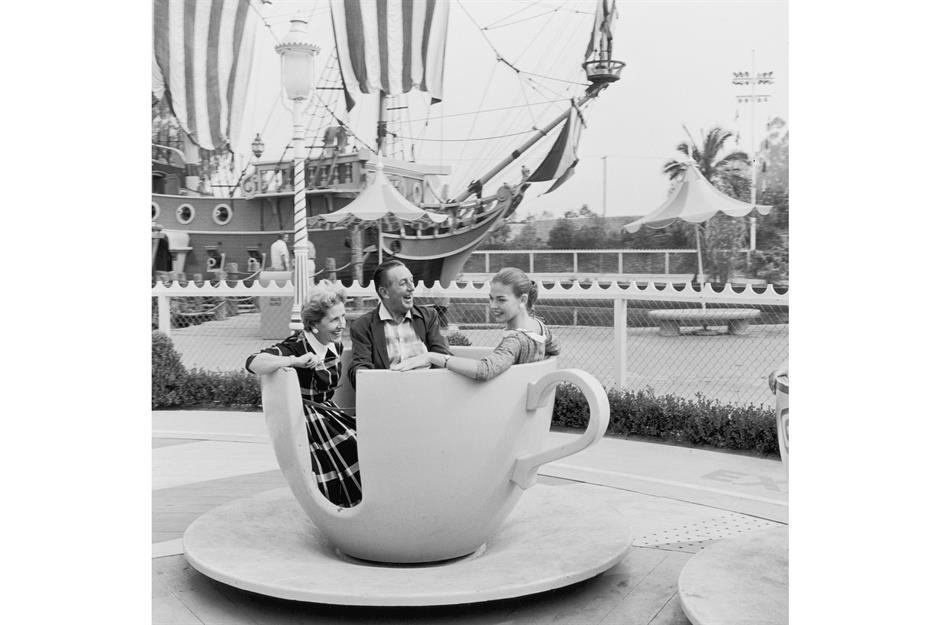
It wasn't unusual to spot Walt Disney himself in his beloved park in the early days, riding the attractions with his family, and chatting to visitors. Disney passed away in 1966, but he's pictured here in the 1950s, enjoying a whirl on the park's tea cup ride with his wife Lillian and daughter Diane.
Yosemite National Park, California
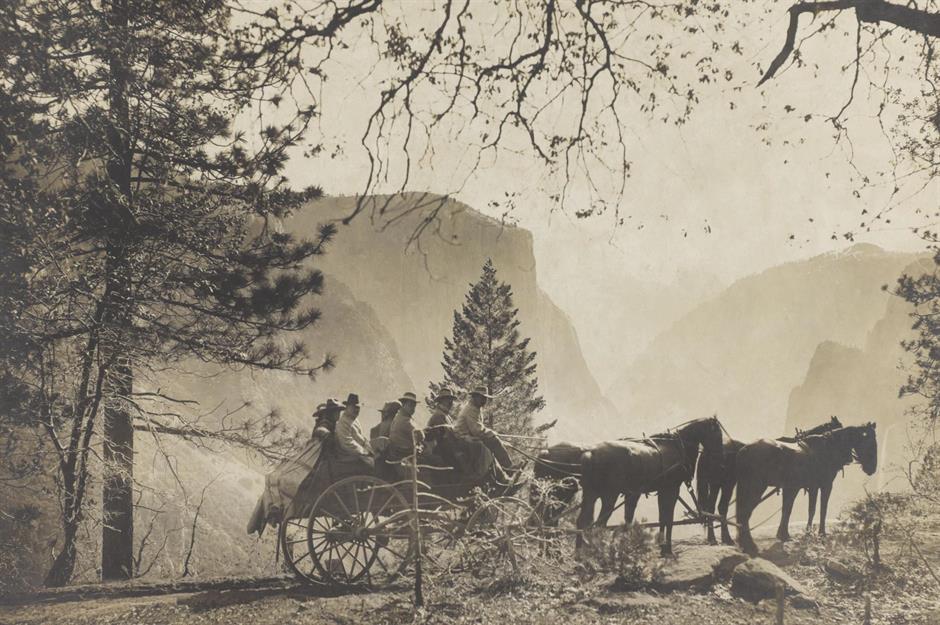
Yosemite had a somewhat messy beginning with parts established as a state park in 1864, and a national park eventually created around the edge in 1890. It wasn't until 1906, though, that the parks were finally merged to create Yosemite National Park as we know it today. Here President Theodore Roosevelt visits the natural area in 1903, accompanied by famed naturalist John Muir. They pause at Inspiration Point in the Yosemite Valley.
Yosemite National Park, California
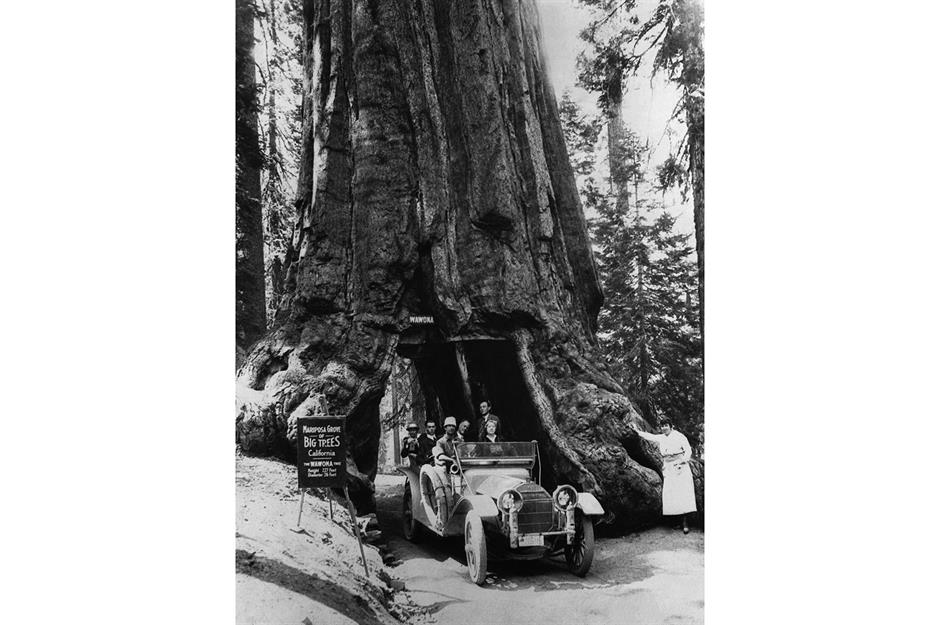
Beyond its mighty bluffs and glacial valley, Yosemite is known for another thing: its giant sequoia. A top place to see these towering trees is the Mariposa Grove in the park's south. Still home to many monstrous specimens – including the huge Grizzly Giant – the grove once contained the Wawona tree (pictured), a large sequoia known for the tunnel at its base. It fell in the 1960s, but is pictured here in the prime of its life in 1918.
Central Park, New York City, New York
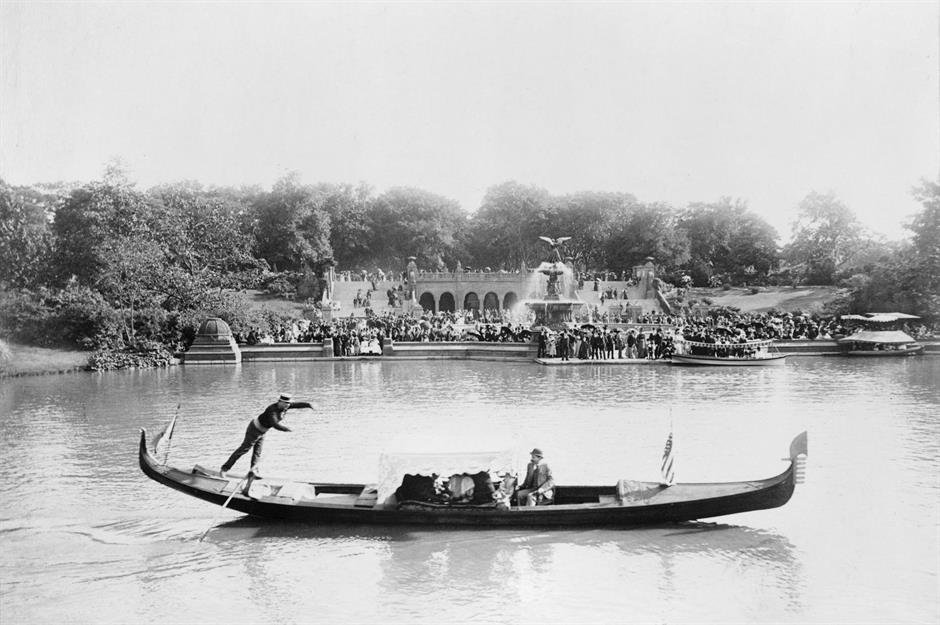
Sprawling over a whopping 840 leafy acres, Central Park is known as the Big Apple's 'Green Lung' for good reason. It officially opened back in 1876, and its wide grassy spaces, forested areas and lakes had instant appeal with New Yorkers. The park is pictured here in 1894, its lakeside terrace abuzz with people and a gondolier whisking tourists through the water.
Central Park, New York City, New York
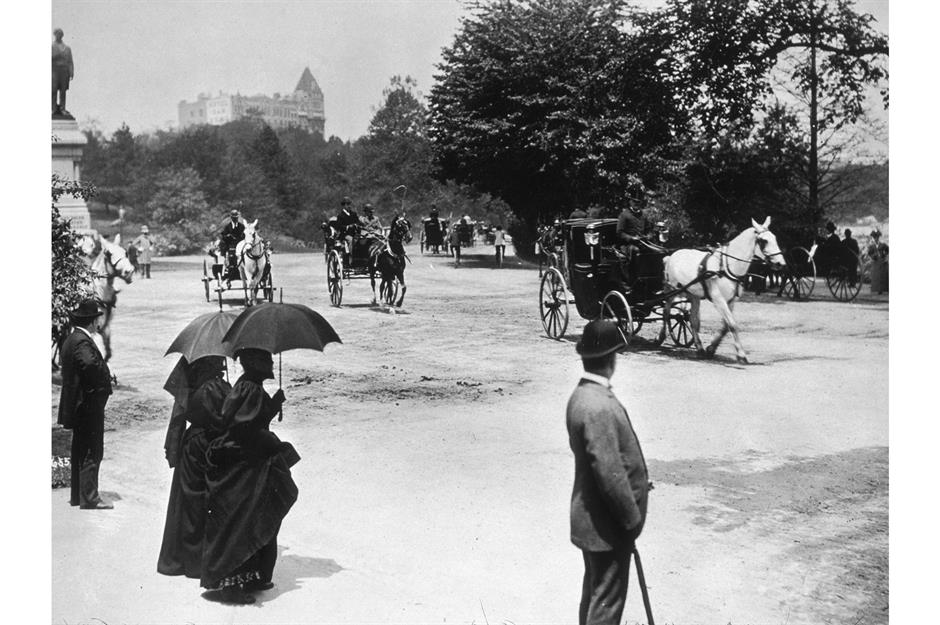
You can still take a carriage ride through Central Park, but back in the 19th century, the sight of tourists bundled into a horse-drawn coach was even more common. Here, in 1899, pedestrians watch on as gentle steeds clip-clop their way through the park. They're standing on the Mall, a pathway purposefully built to accommodate carriages.
Central Park, New York City, New York
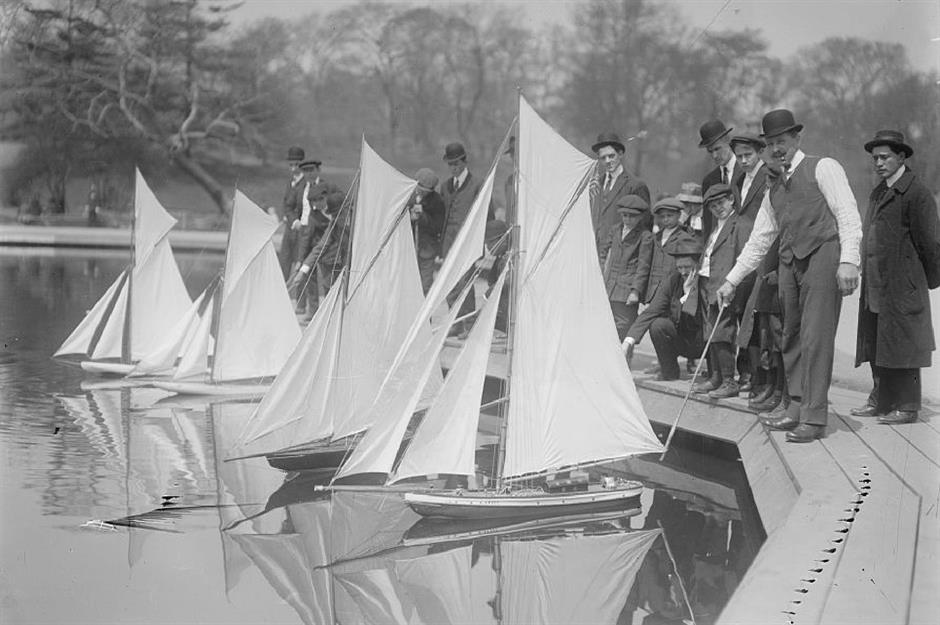
There's a long history of model yacht racing in Central Park too – in fact, the Central Park Model Yacht Club celebrated its 100th birthday back in 2016. The sport became particularly popular from the 1880s and remains so today – competitors are pictured here around 1910, getting ready to race their yachts on Conservatory Lake.
Central Park, New York City, New York
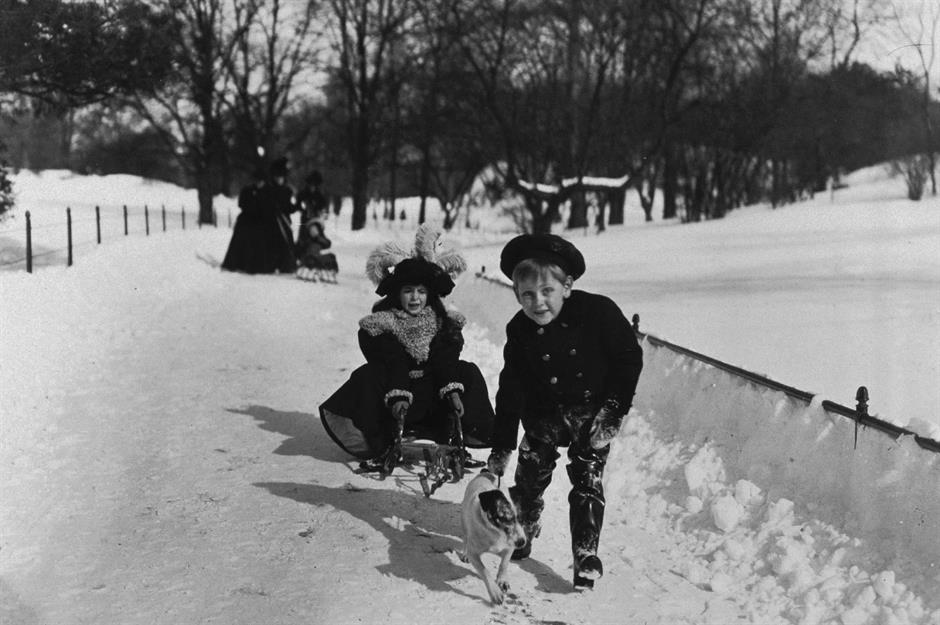
Nowhere in New York City are the seasons more prominent than in Central Park, and in winter it truly comes to life. While any sludge is quickly dredged from the Big Apple's busy boulevards, you can usually rely on a glorious carpet of snow in the city's Green Lung. In winter, ice-skating, cross-country skiing and sledding all remain popular with modern visitors – this photo, taken in 1896, shows a pair of young children enjoying the latter.
Hollywood Sign, Los Angeles, California
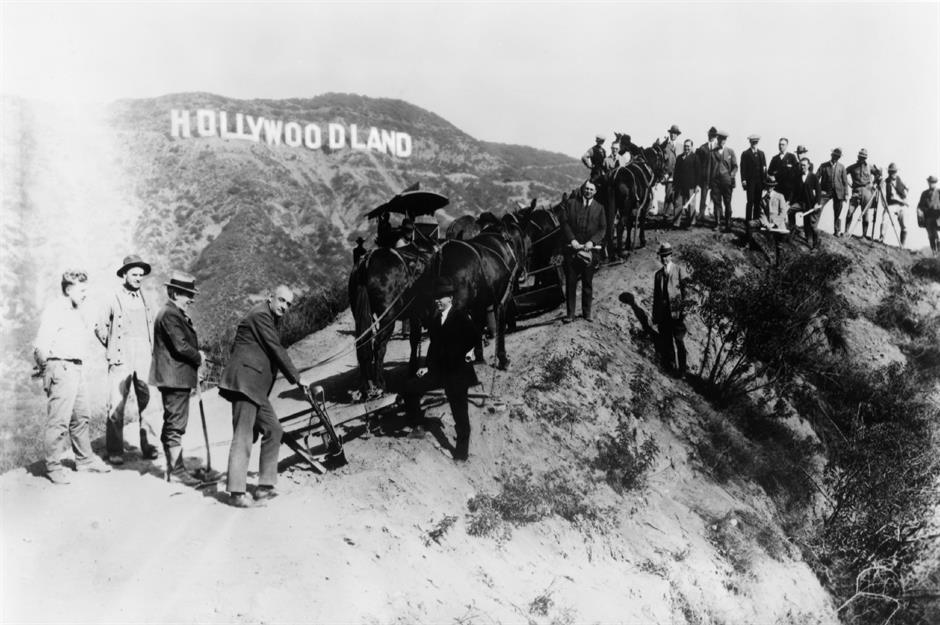
The huge Hollywood Sign, standing high in the Hollywood Hills, is a familiar sight to tourists and Angelinos. It didn't always look as it does today, though. Originally an advert for a new housing development, it was erected in 1923 and read 'Hollywoodland'. This photo shows a group of surveyors and builders for the new estate posing beneath the sign around 1925.
Hollywood Sign, Los Angeles, California
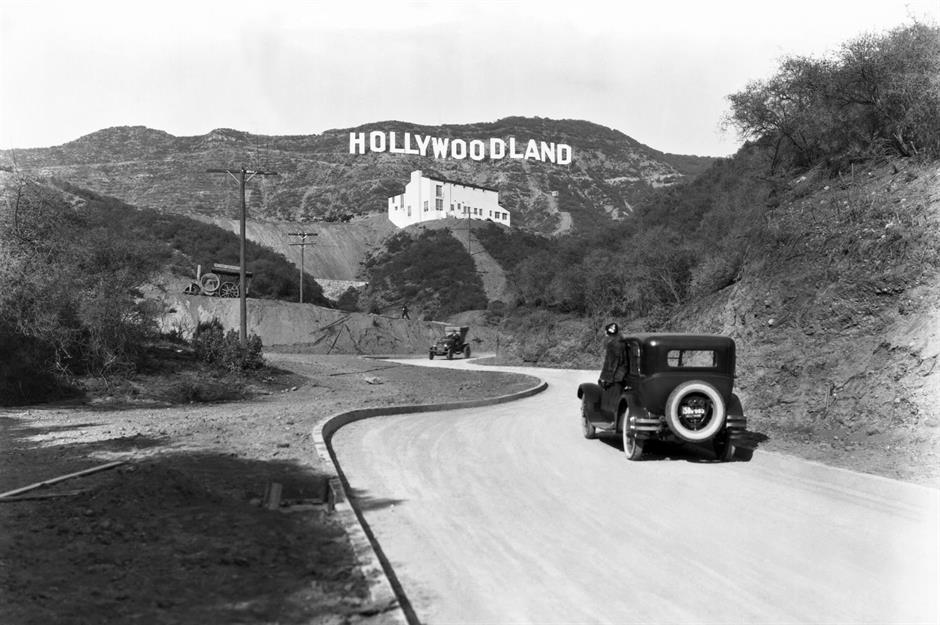
The Hollywoodland sign stood tall for several decades, but eventually fell into disrepair. When it was finally fixed up in the 1940s, the 'land' section was ditched and the landmark we know today was born. It's pictured here around the mid-1920s, with white-washed Kanst Art Gallery rising up beneath it.
Fremont Street, Las Vegas, Nevada
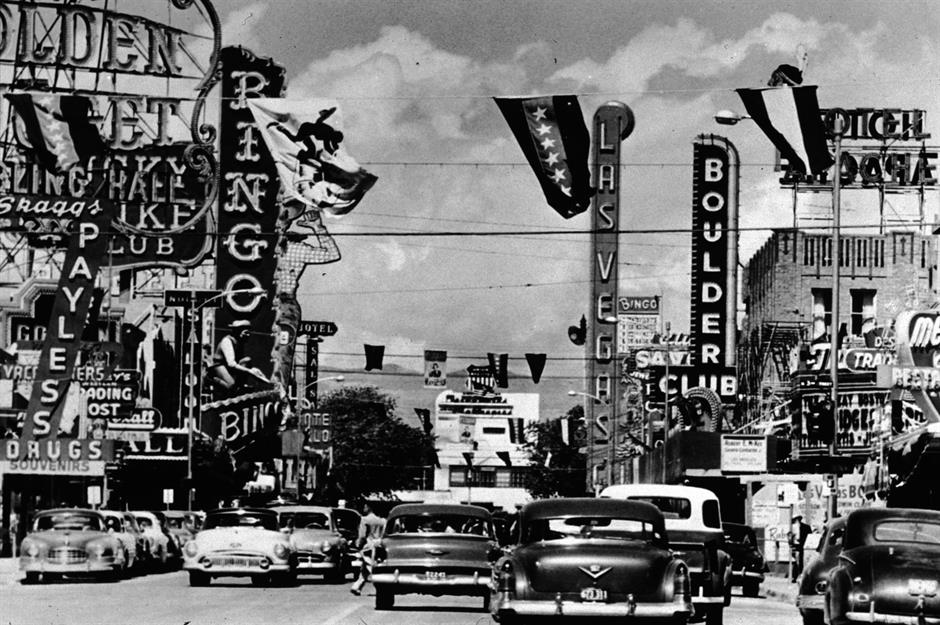
Before Las Vegas became all about The Strip, Downtown's Fremont Street was the place to be, and this buzzy boulevard remains a top attraction in Sin City. Glitter Gulch, as it came to be known, built up during the 1920s, and thrived after gambling was decriminalised in 1931. It's shown here in the 1950s, clogged with cars driving past its winking neon signs.
Fremont Street, Las Vegas, Nevada
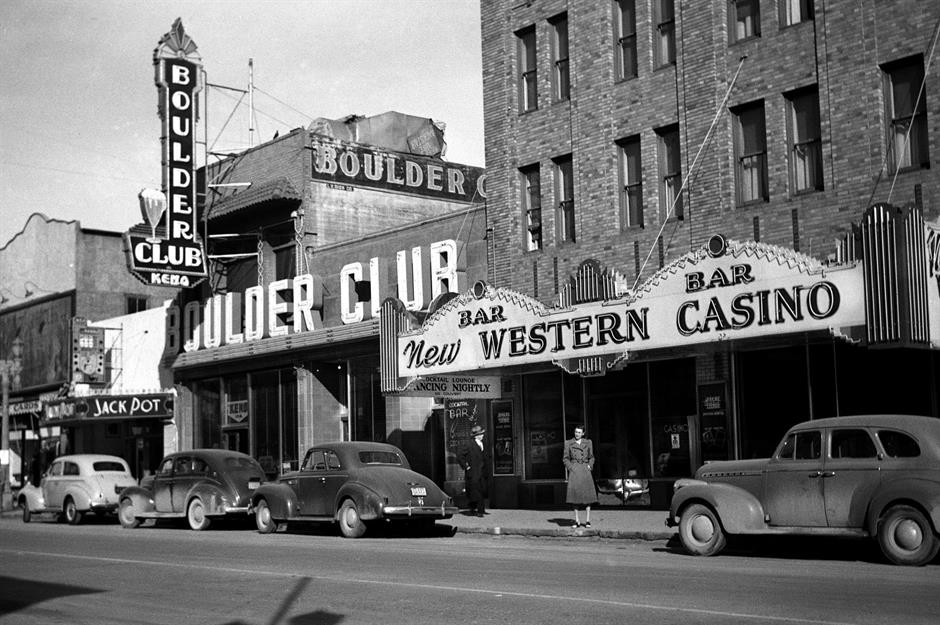
An iconic venue of the day was Boulder Club (pictured), a glittering casino that was one of the earliest spots to get a gambling licence in the 1930s. It sadly burned down in 1956. While Fremont Street is now overshadowed by The Strip, you can still find plenty of live music venues and restaurants Downtown, not to mention SlotZilla, an enormous slot-machine-themed zip line.
Coney Island, New York City, New York
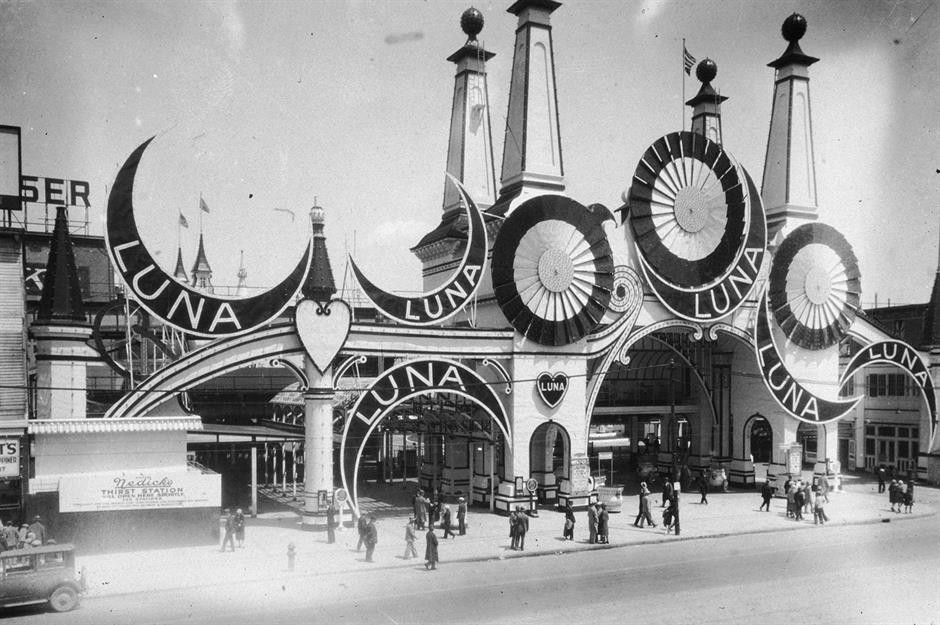
A colourful amusement complex and neighbourhood in New York City's Brooklyn, Coney Island has long been known for its roller-coaster-filled theme parks, fast-food stands and broad sandy beach. This kitsch pleasure-seeker's paradise burgeoned at the beginning of the 1900s with Steeplechase Park, Luna Park (pictured) and Dreamland opening in 1897, 1903 and 1904 respectively.
Coney Island, New York City, New York
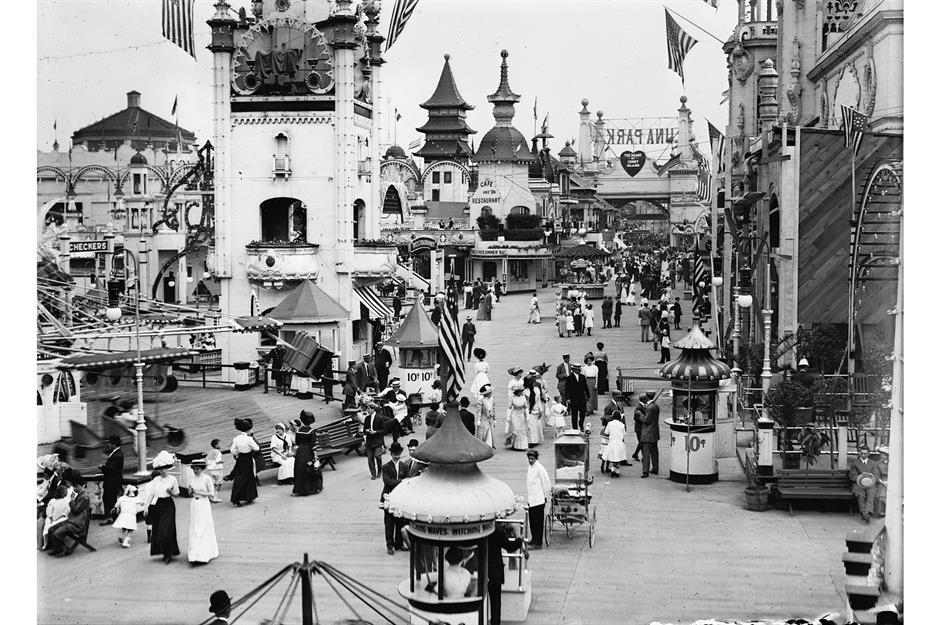
The attraction-filled Luna Park (pictured) packed in visitors for a little over four decades, but was sadly gutted by a fire in 1944. Original Luna Park was known for its whimsical entryway, its Electric Tower, which lit up after dark, and wholesome attractions such as the Helter Skelter. It has now been reborn as a new Coney Island park, modelled on the original, which is pictured here in the early 1900s.
Coney Island, New York City, New York
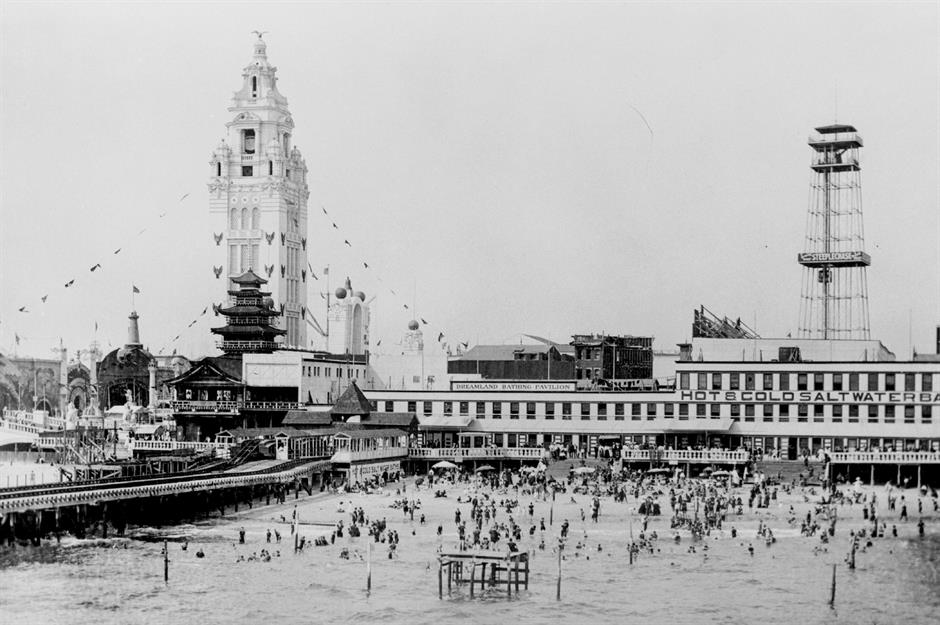
Alongside Luna Park, there was Dreamland, another sadly short-lived site. It too was dominated by a mammoth illuminated tower, as well as attractions including Venetian-style canals, a ballroom and an animal arena. It was also destroyed by fire less than a decade after it opened. Dreamland is seen here in the early 1900s, with the area's large bathing pavilion in the background behind the beach.
Mount Rainier National Park, Washington
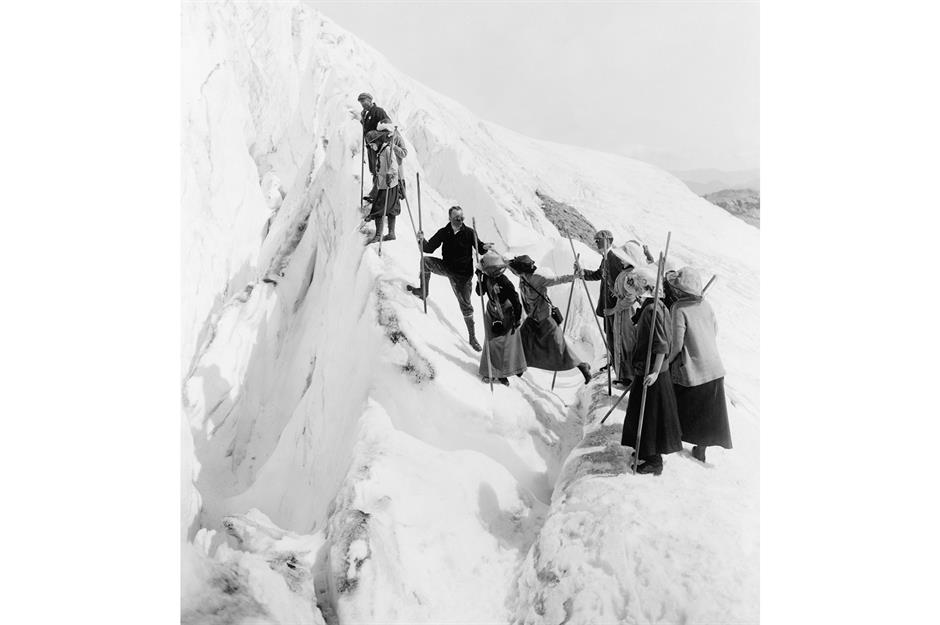
This incredible slice of Washington state has been a national park since 1899, and is named for Mount Rainier, a glacier-topped volcano that peaks at well over 14,000 feet (4,267m). Paradise is one of the glaciers that covers titanic Mount Rainier – it's pictured here in 1915 being scaled by a group of climbers.
Mount Rainier National Park, Washington
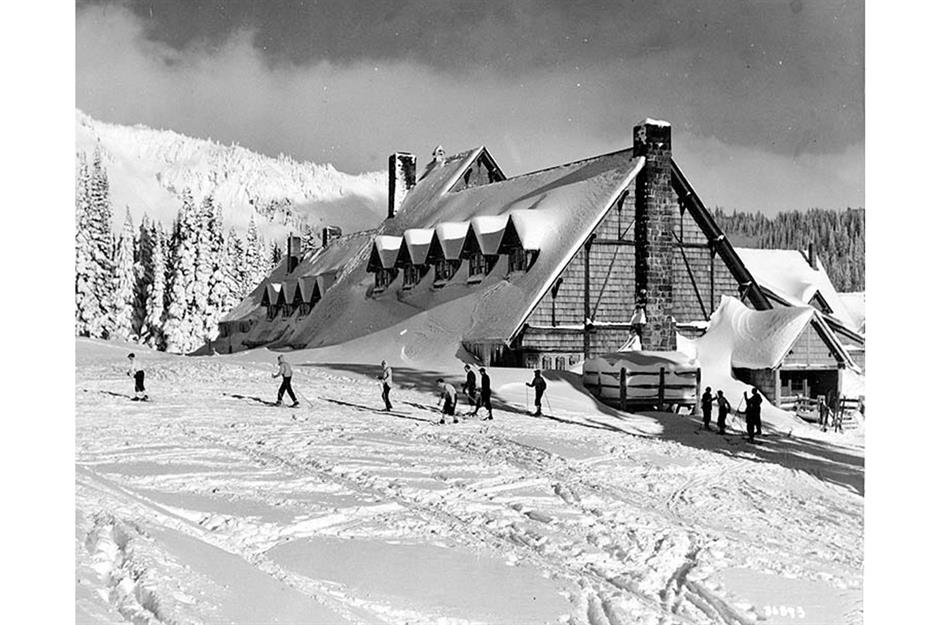
The Paradise area is still one of the most popular regions of the park today, known for its blossom-flecked meadows and its incredible opportunities for winter sports. Pictured here in mid-winter in the 1930s, skiers strike out from Paradise Inn, which is among the most well-loved lodges in the national park system. Dating to 1916, the inn makes for a dreamy winter retreat today, with its low beams, snug rooms and large fireplaces.
Mount Rainier National Park, Washington
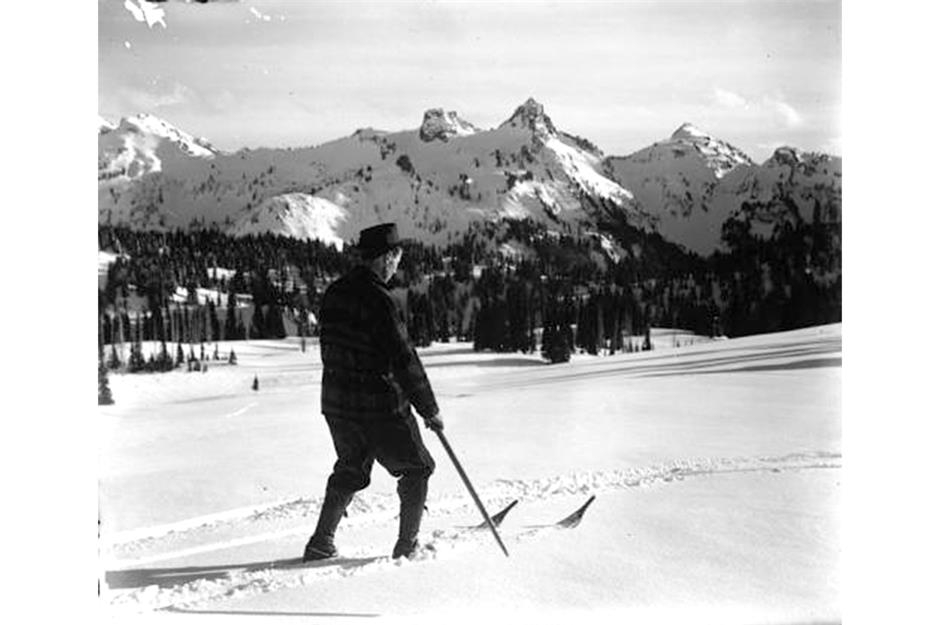
The rest of the park has long been a popular spot for those wanting to hit the slopes too, with historic ski resorts peppering the area. This keen skier can be seen in the powder right back in 1907.
Lincoln Memorial, Washington DC
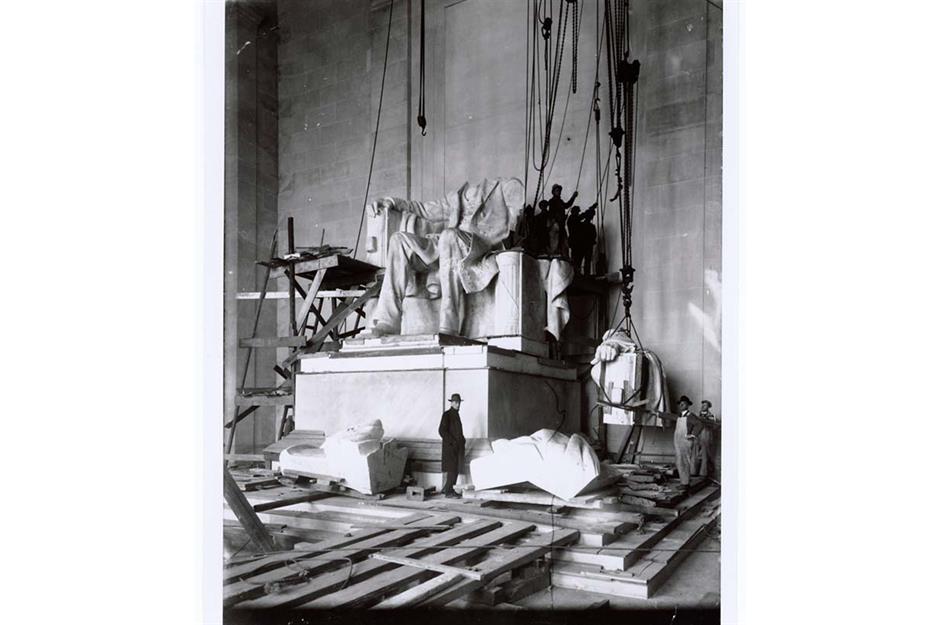
A tribute to one of America's most formative presidents, the Lincoln Memorial was dedicated in 1922, more than five decades after his death. Standing at the far western edge of the National Mall, the famed memorial is characterised by grand marble columns and an enormous seated statue of Lincoln himself inside. That vast statue is seen here during its installation in 1920.
Lincoln Memorial, Washington DC
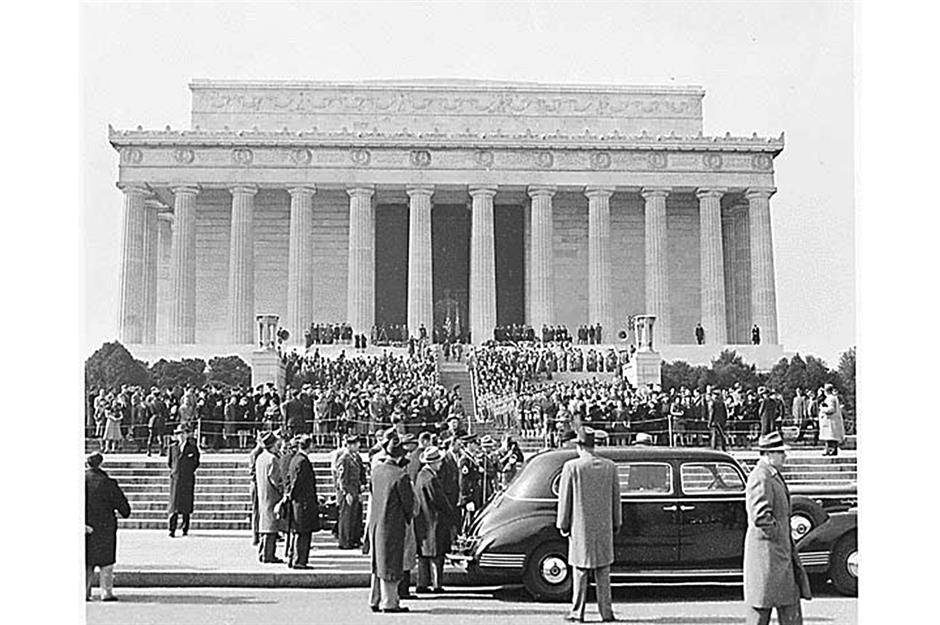
The memorial to 'Honest Abe' is now one of the most iconic monuments in DC. Over the years, it has been the site of several pivotal moments in history, and it served as the spot where Martin Luther King Jr delivered his famed "I Have A Dream" speech. In this photo, taken on 12 February 1947, crowds gather to celebrate the late president's birthday.
Knott's Berry Farm, Buena Park, California
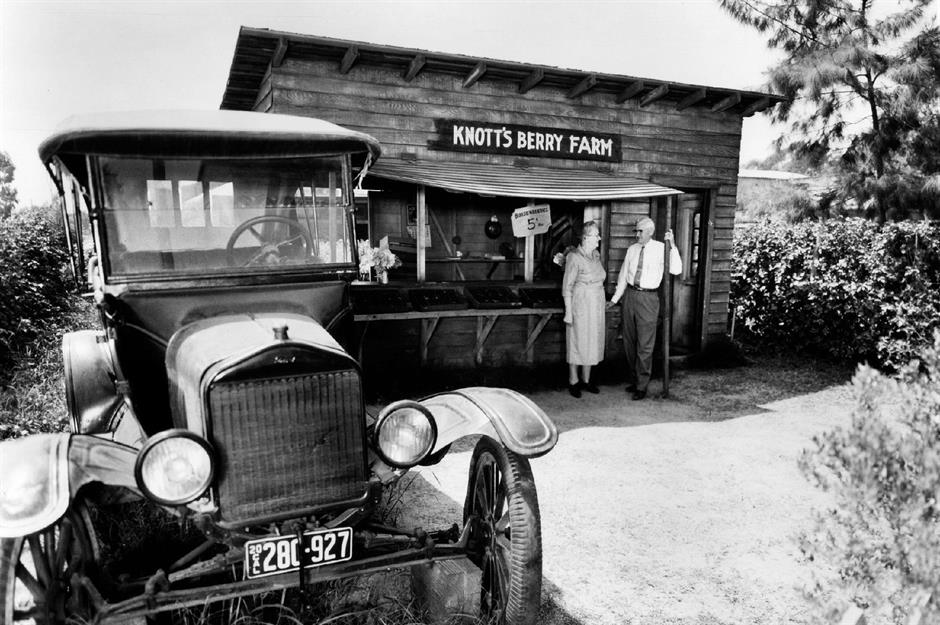
Knott's Berry Farm, a wholesome, family-friendly theme park just over 20 miles (32km) from LA, began life as a berry farm. Walter and Cordelia Knott (pictured), who purchased the land in the 1920s, made their living from growing boysenberries and selling them at a humble roadside stand. Before long, their simple berry business was drawing in the crowds.
Knott's Berry Farm, Buena Park, California
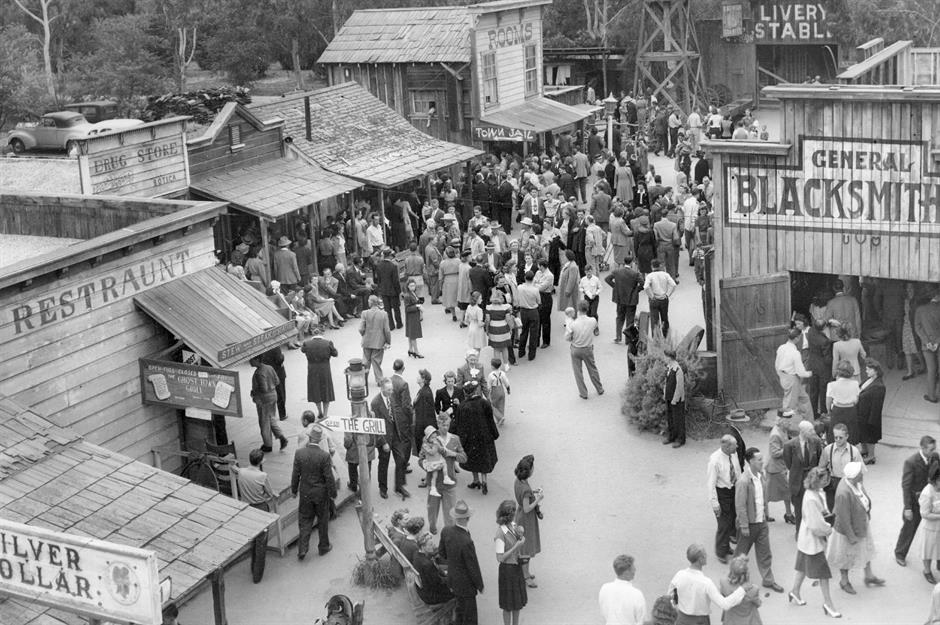
Further visitors flooded in when Cordelia Knott began selling her delicious fried chicken dinner in the 1930s, and by the 1940s the pair decided to add yet more attractions. The Ghost Town, an Old West-themed area packed with wooden buildings from a blacksmiths' shop to saloons, opened in this decade. It's pictured here crammed with visitors in its early days.
Gateway Arch, St Louis, Missouri
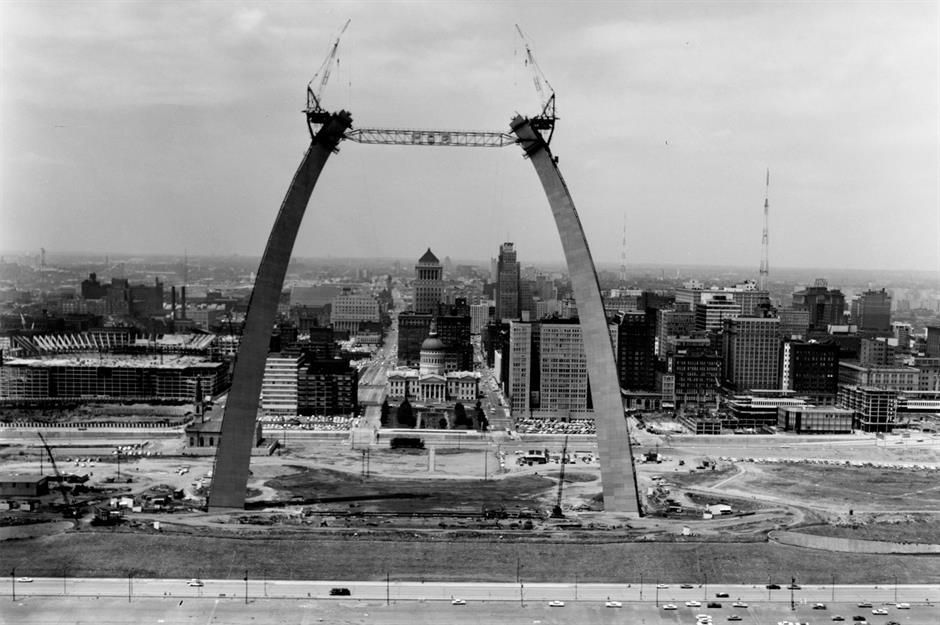
An enduring symbol of St Louis, Missouri, the Gateway Arch has watched over the waterfront here since the 1960s. It was created as a monument to westward expansion – the movement of settlers towards the American west during the 19th century, and was a concept pioneered by President Thomas Jefferson. It's seen here taking shape in 1965.
Gateway Arch, St Louis, Missouri
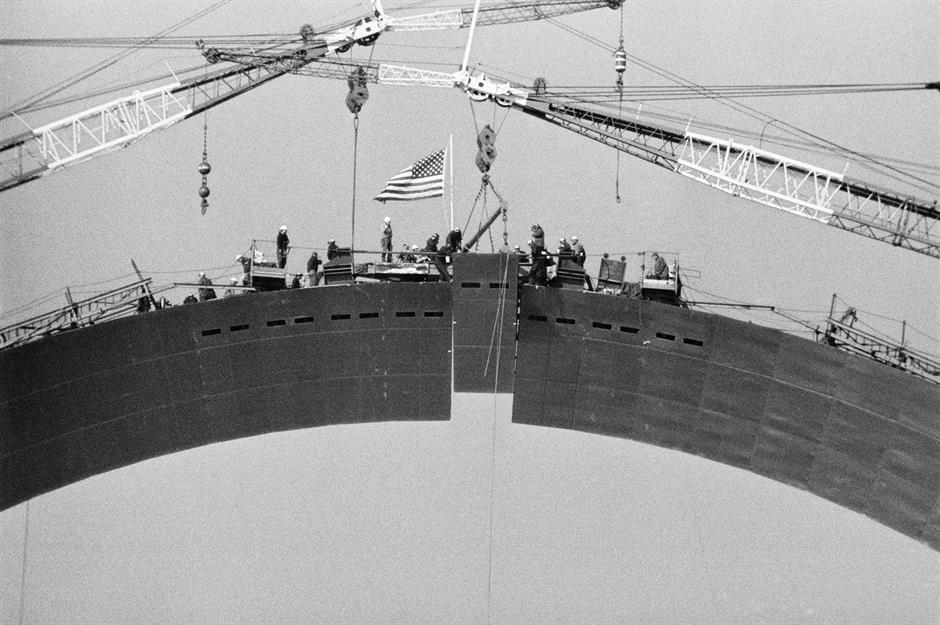
The keystone was the final part of the arch to be lifted into place, and this photo shows the final stages of the monument's construction in 1965. It's thought that the keystone contains a time capsule complete with the signatures of more than 760,000 residents, as well as some other unknown relics.
Pike Place Market, Seattle, Washington
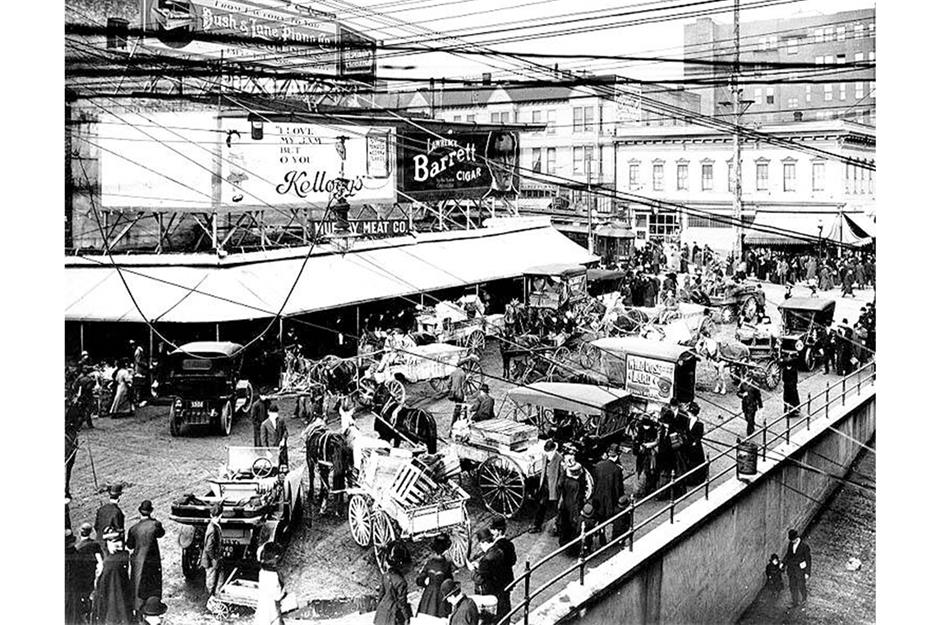
Seattle's Pike Place Market has been loved by locals and tourists alike since it opened back in 1907. It was originally built as the burgeoning city of Seattle demanded more fresh produce from local farmers – on opening day, in August 1907, farmers brought wagons brimming with fruit and veg to the marketplace, and they quickly sold out. This photo shows wagons parked up outside the market around 1910.
Pike Place Market, Seattle, Washington
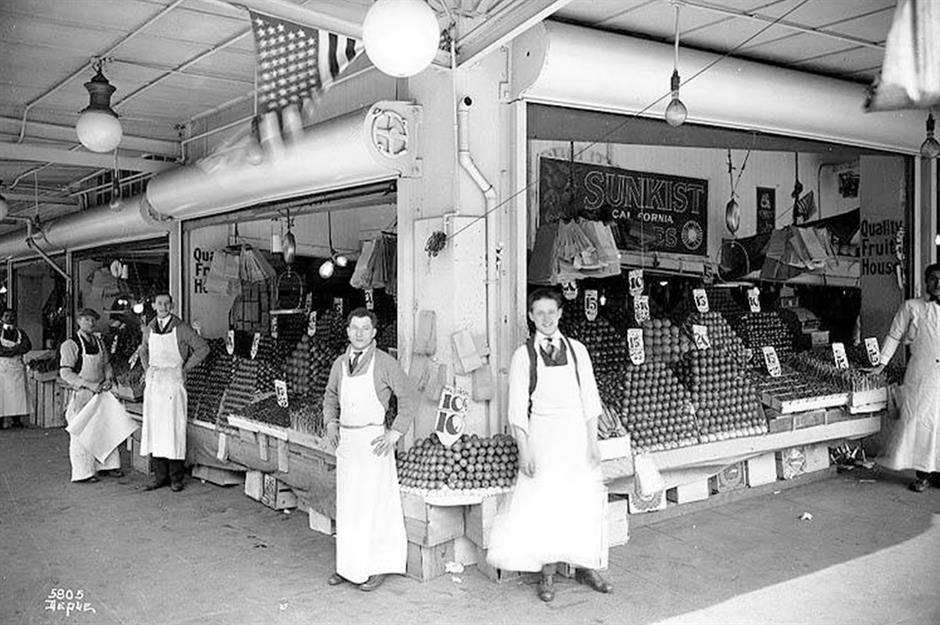
The first permanent building was constructed later in 1907, housing 76 produce stalls, which heaved under the weight of the season's fresh offerings – here vendors pose before their fruit stall in the 1920s. Today the produce stands are joined by craft stalls, indie boutiques and hip foodie spots too.
Weeki Wachee Springs State Park, Weeki Wachee, Florida
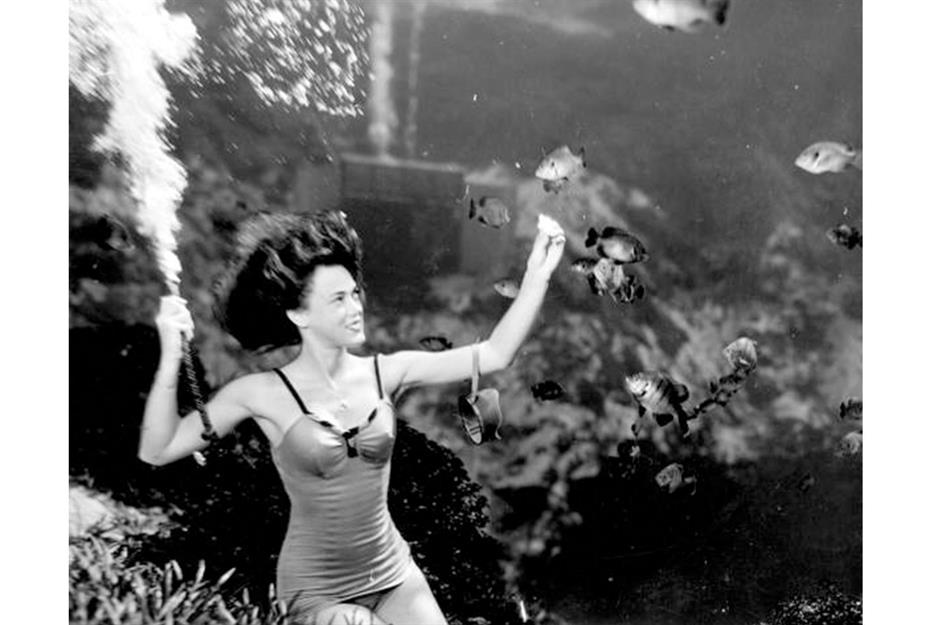
Weeki Wachee Springs State Park combines a natural wonder with a family attraction full of heart. First and foremost, Weeki Wachee is a beautiful natural spring – one of the deepest in the US, in fact – but it's known for something else. Since the 1940s, the spring has hosted 'mermaid shows' (pictured), which involve the real-life 'mermaids' swimming up to 66 feet (20m) below the surface to perform impressive synchronised dances.
Weeki Wachee Springs State Park, Weeki Wachee, Florida
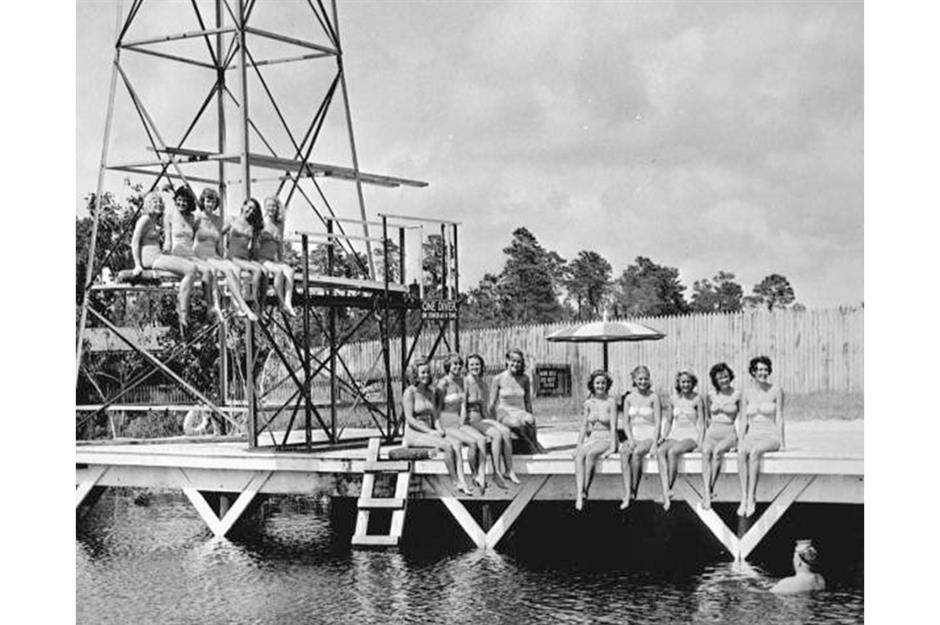
To keep the magic alive, the mermaids rely on 'breathing hoses' invented in the 1940s by Newton Perry, the brains behind the attraction and its former owner. A troupe is pictured here in 1949, smiling from a dock and diving tower at Weeki Wachee, ready for their next show. The site now also boasts a water park, riverboat rides and casual restaurants.
Cedar Point, Sandusky, Ohio
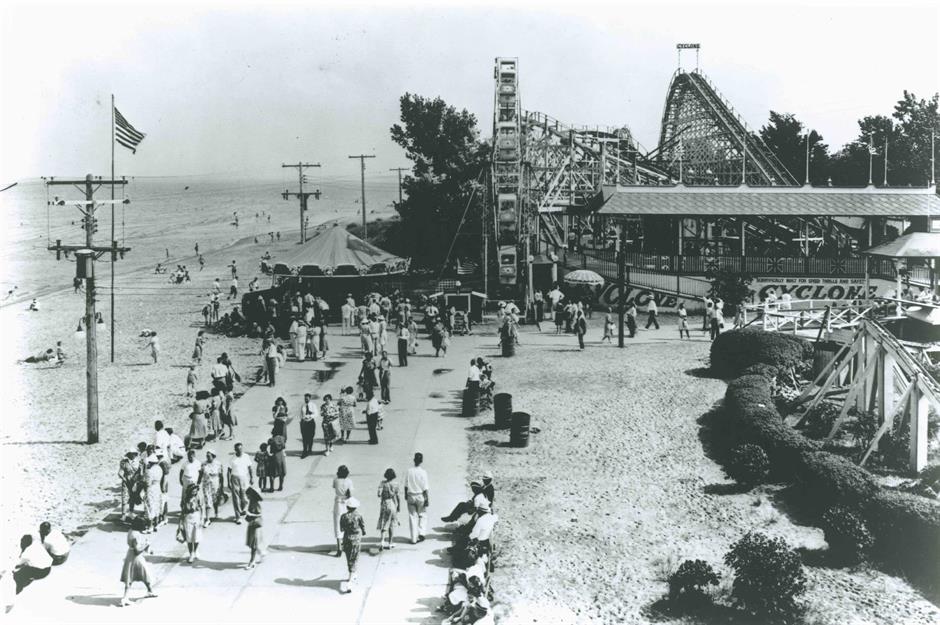
This theme park, one of the oldest in America, has always set great store by its thrill rides. The first roller coaster debuted here in 1892, a couple of decades after the park's inauguration, and this later shot shows the 1920s wooden Cyclone in the background. Cedar Point is known for its dizzying coasters today too.
Cedar Point, Sandusky, Ohio
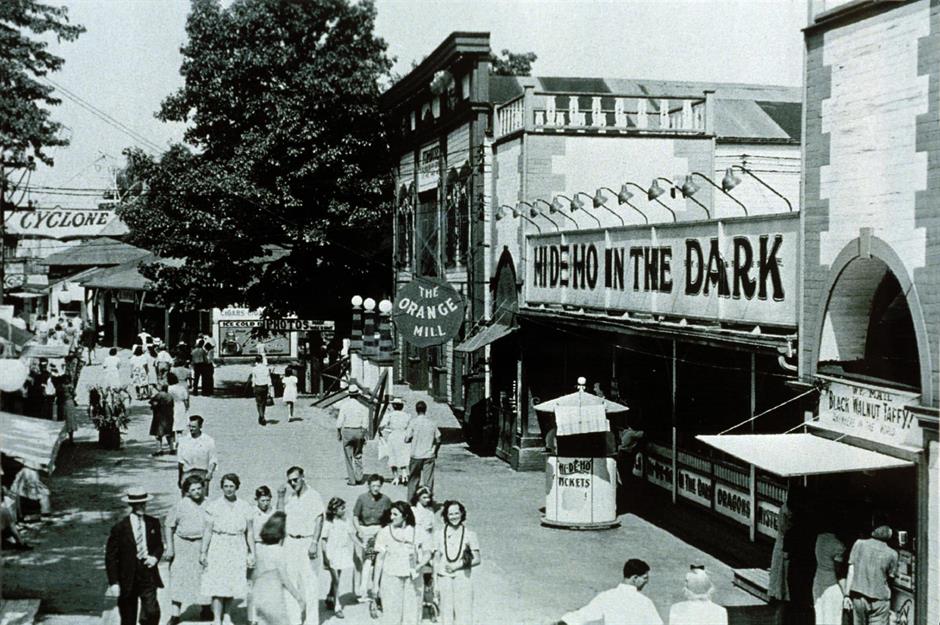
It's not all about white-knuckle rides though – roller coasters in the 150-year-old park sit alongside kitsch carousels and other kid-friendly attractions. Back in the day, Hi De Ho In The Dark, the colourful fun house pictured here, was a popular family amusement.
Mount Rushmore, Keystone, South Dakota
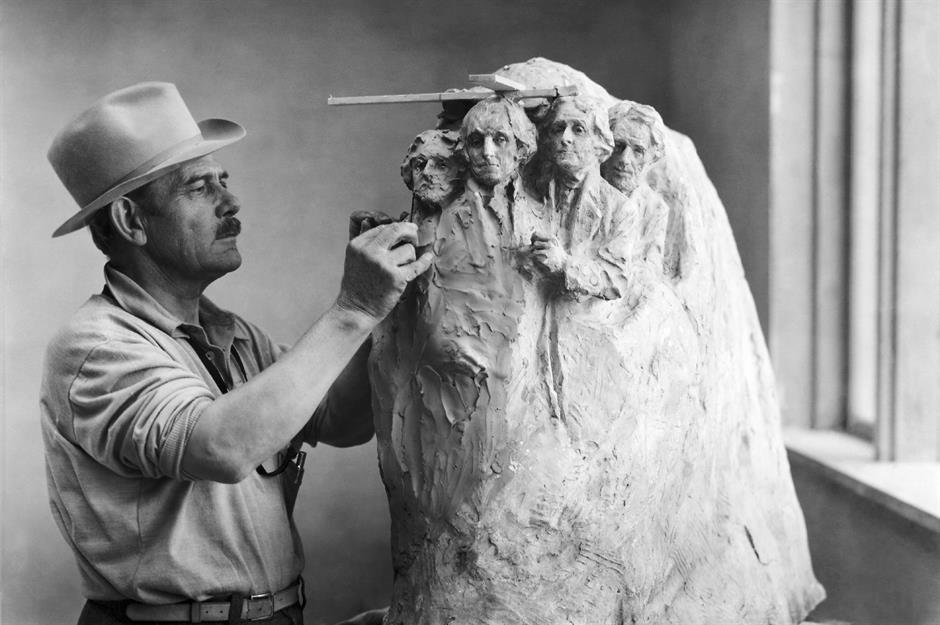
The four stone presidents of Mount Rushmore – George Washington, Thomas Jefferson, Theodore Roosevelt and Abraham Lincoln – have been watching over South Dakota's Black Hills region since they were completed in 1941. Here we see lauded sculptor Gutzon Borglum in his studio, working on the design for what would become one of America's most iconic attractions.
Mount Rushmore, Keystone, South Dakota
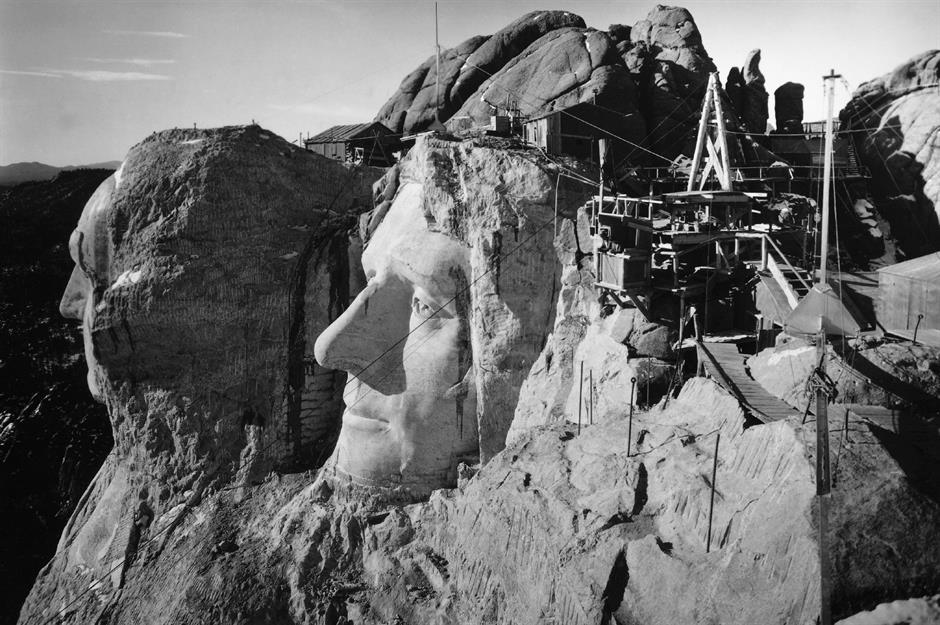
The huge granite faces – each around 60-feet (18m) tall – would take more than a decade to complete. This photo is thought to have been captured circa 1940, a year before the great feat was finished. It shows the bold profile of Thomas Jefferson and the outline of George Washington in the distance, as seen from the top of Abraham Lincoln's head.
Golden Gate Bridge, San Francisco, California
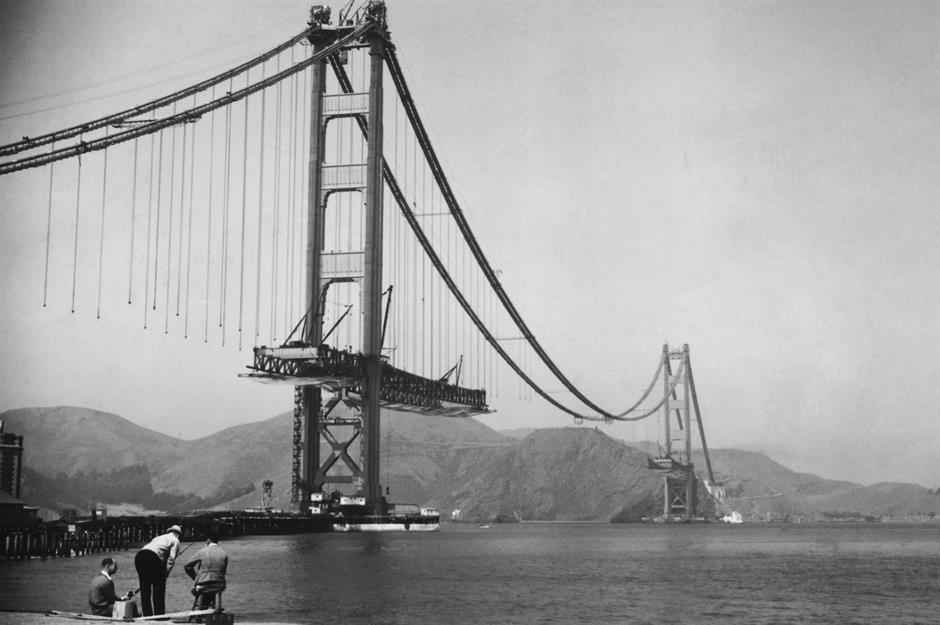
Arguably America's most famous bridge, the red-orange Golden Gate has spanned its namesake strait since 1937. When first completed, it was the longest and tallest suspension bridge on the planet, and its awesome size still wows modern visitors. The nascent bridge is pictured here in the mid-1930s, when its towers stood tall, but the main span was yet to be built.
Golden Gate Bridge, San Francisco, California
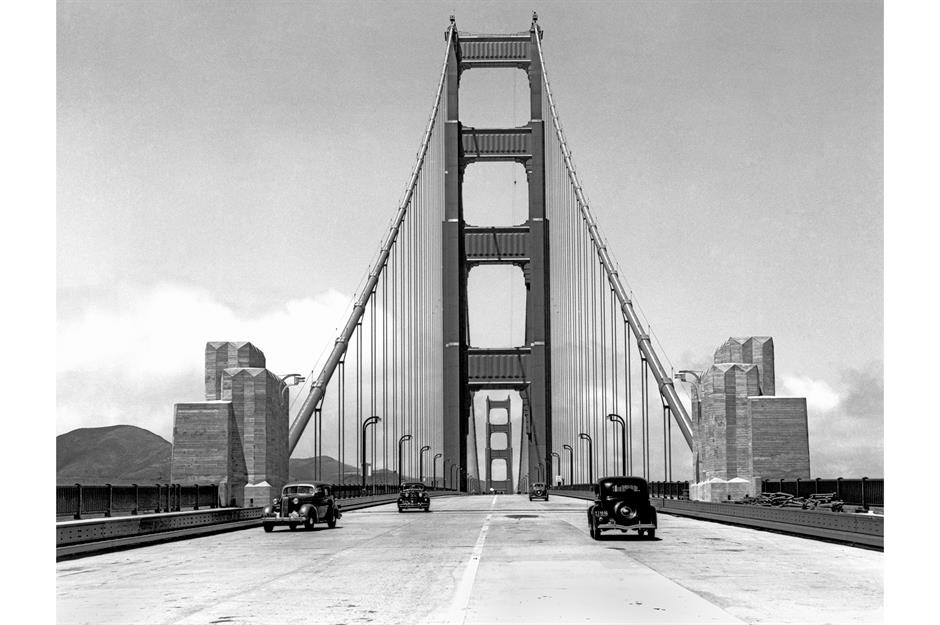
The epic bridge was eventually completed in 1937, and opened to traffic in May of that same year. Journalists were among the first to take a drive across the mammoth expanse – a handful of press cars are pictured here on 24 May 1937, a few days before the structure's official opening date.
Golden Gate Bridge, San Francisco, California
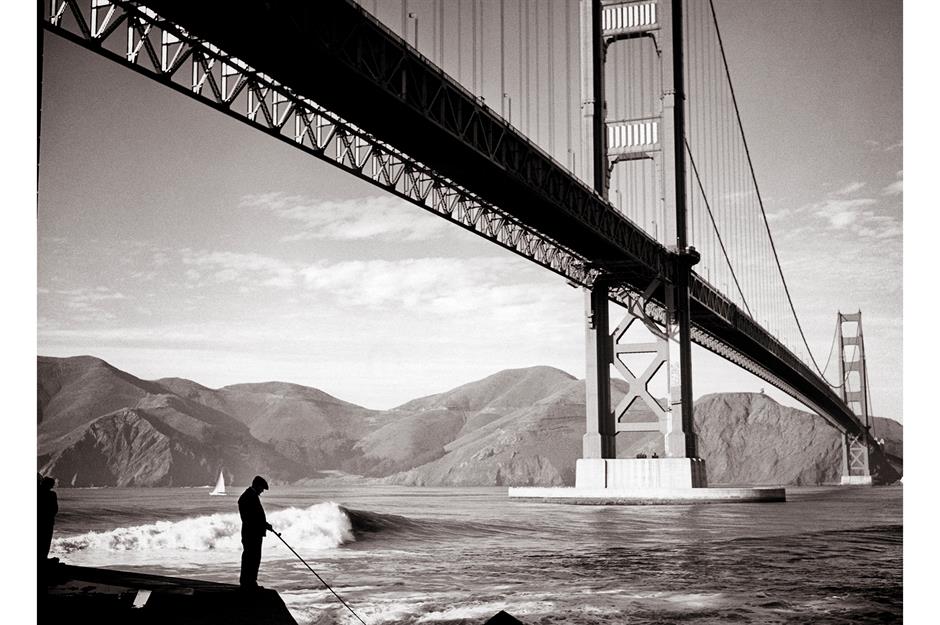
Today the bridge remains a defining feature of San Francisco, carrying more than 100,000 vehicles per day. It makes a great subject for photographers too, and it looks particularly enigmatic in this 1940s shot, with a fisherman silhouetted beneath the bridge's expanse.
French Quarter, New Orleans, Louisiana
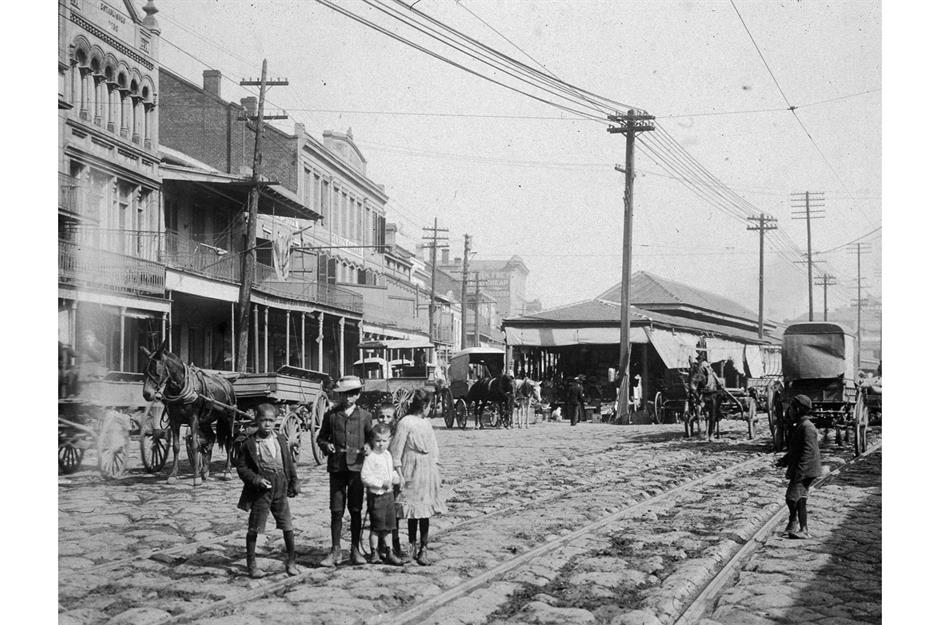
New Orleans' historic French Quarter, also known as the Vieux Carre, attracts around 10 million visitors a year, with the French Market being one of its major draws. Originally a Native American trading site long before European settlement, the market evolved as French and Spanish colonists opened it to traders from around the world. Pictured here around 1890, the French Market continued to change over the years, with significant renovations taking place during the 1930s under the Works Progress Administration (WPA).
French Quarter, New Orleans, Louisiana
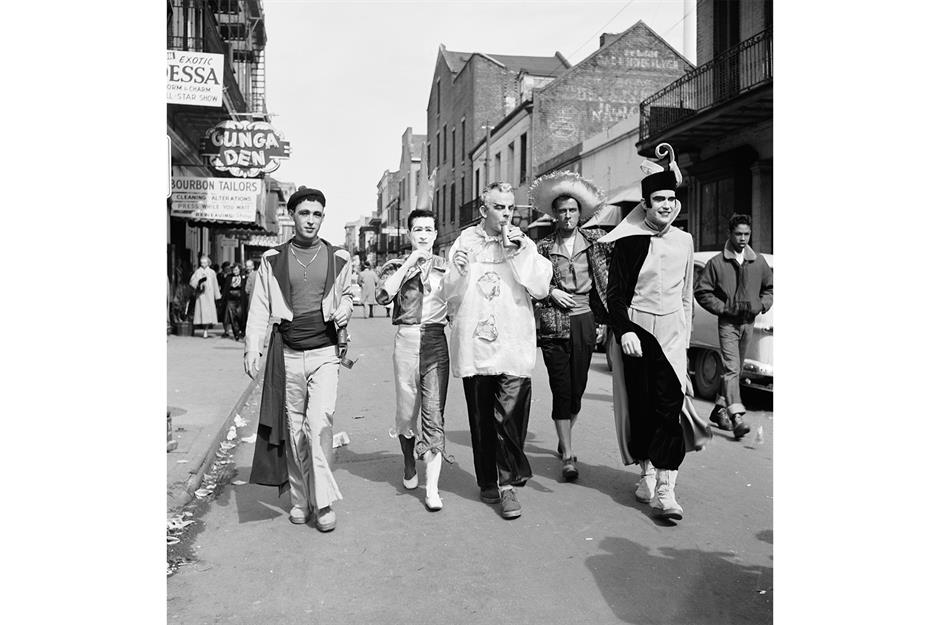
Bourbon Street has long been party central in the French Quarter. Absinthe joints, jazz clubs and iconic restaurants all sprouted up in the area over the decades and are still a major part of the area’s appeal today. Mardi Gras has, of course, always been gleefully celebrated here as these revellers from the early 1950s show.
Niagara Falls, New York
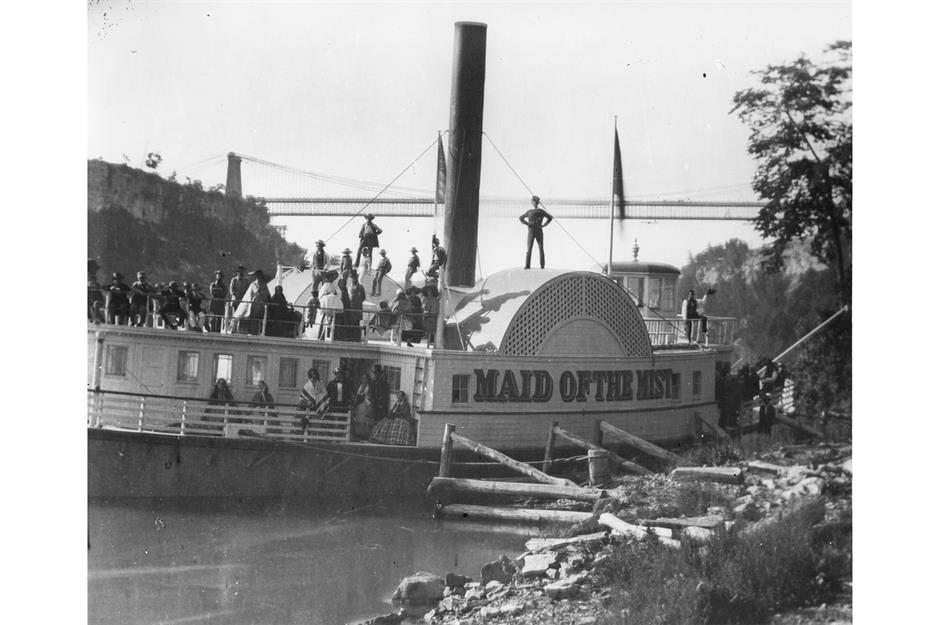
The spectacular beauty of Niagara Falls has attracted tourists for decades and for many a trip aboard the iconic Maid of the Mist is an essential part of the trip. These enthusiastic visitors are pictured in 1859, only four years after the service was established.
Niagara Falls, New York
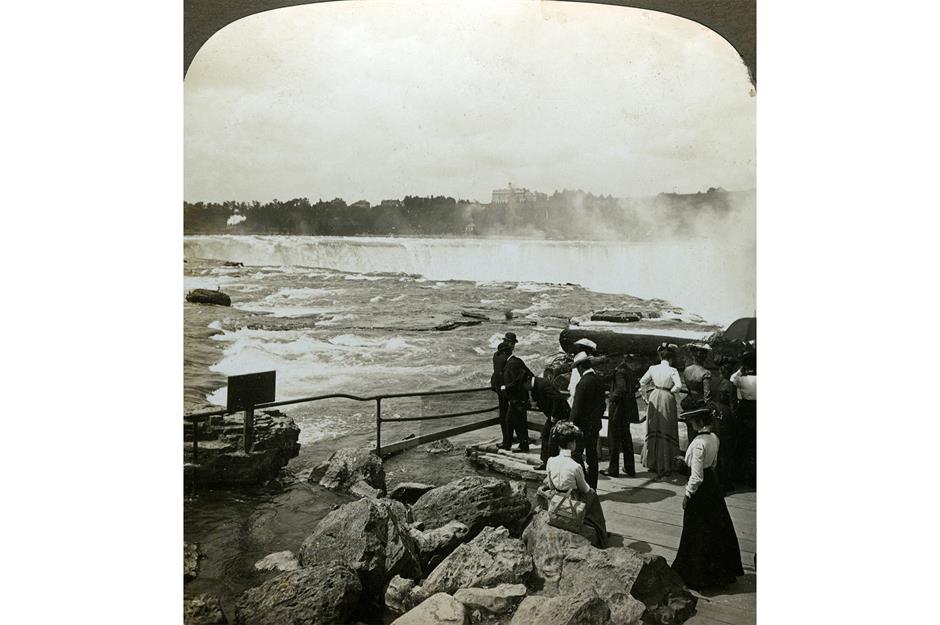
Concerned about the number of industrial buildings obscuring the beauty of the area, a group of early environmentalists formed the Free Niagara movement. As a result, the Niagara Falls State Park was established in 1885. Originally known as the Niagara Reservation, it is the oldest state park in the US. Park commissioners cleared out structures that blocked views along the upper rapids and the area was landscaped to create pathways for visitors to contemplate the awesome beauty of nature. The sightseers pictured here around 1910 are reaping the benefits, which are still enjoyed by around 12 million people a year.
Now check out these American tourist attractions that no longer exist
Comments
Do you want to comment on this article? You need to be signed in for this feature